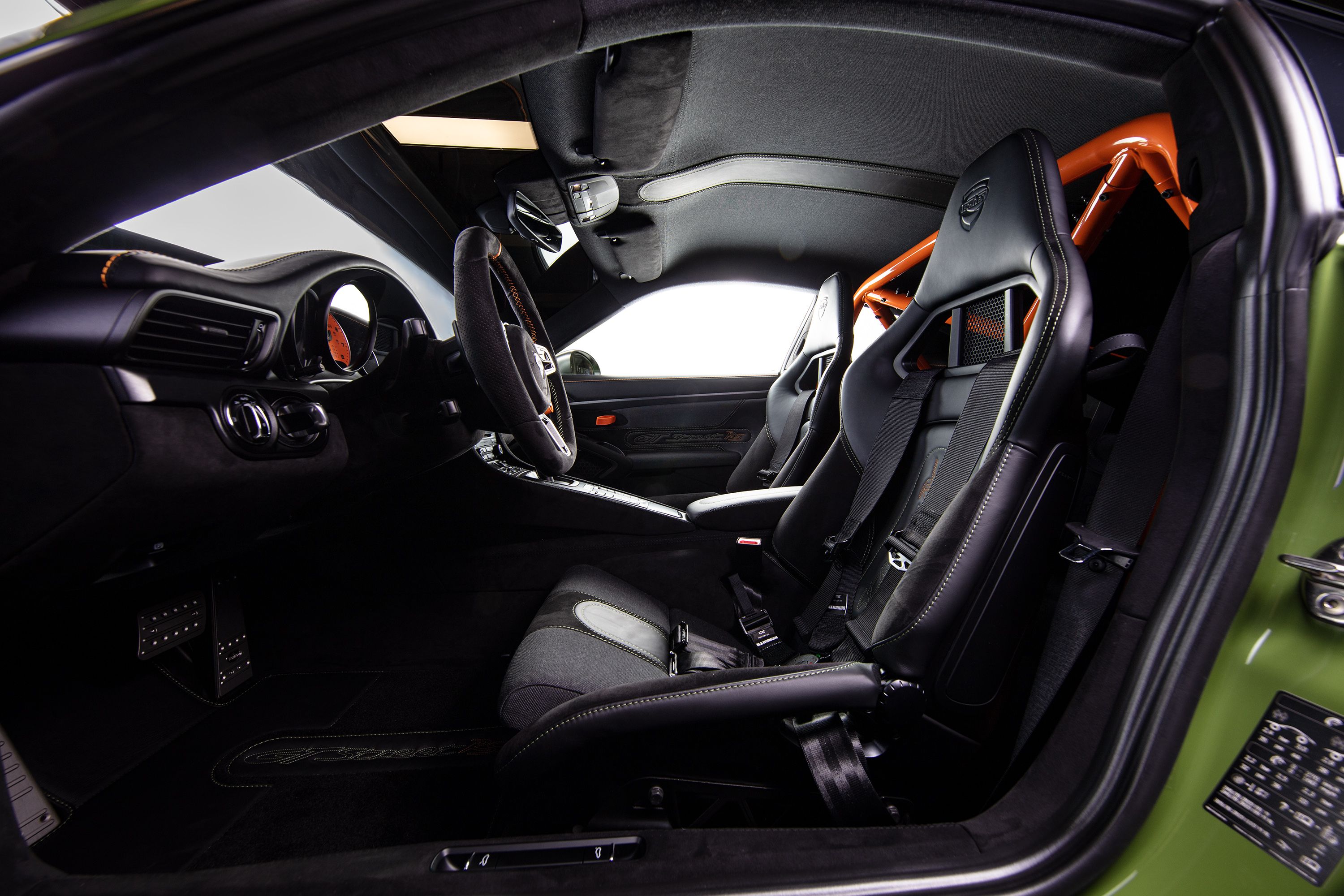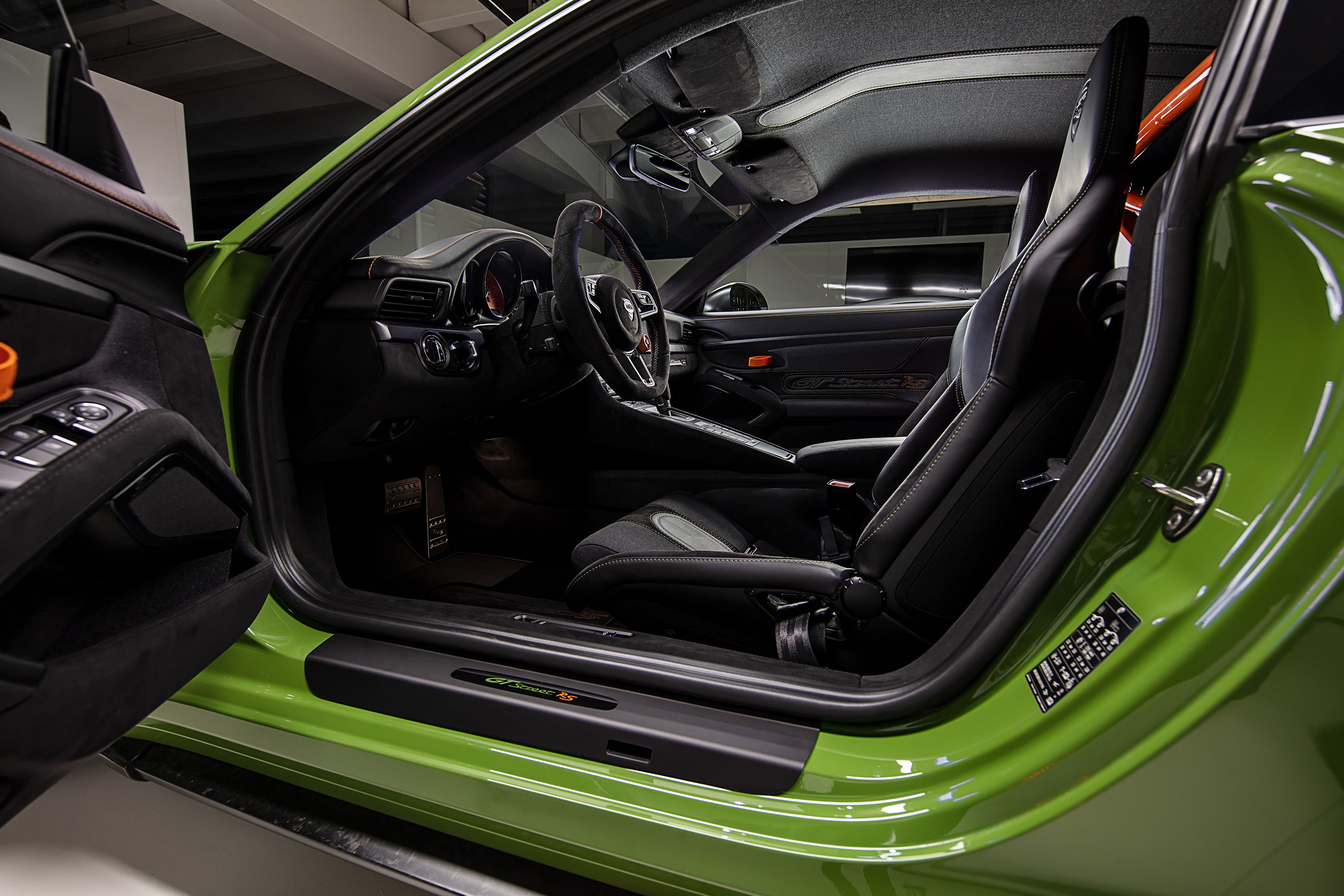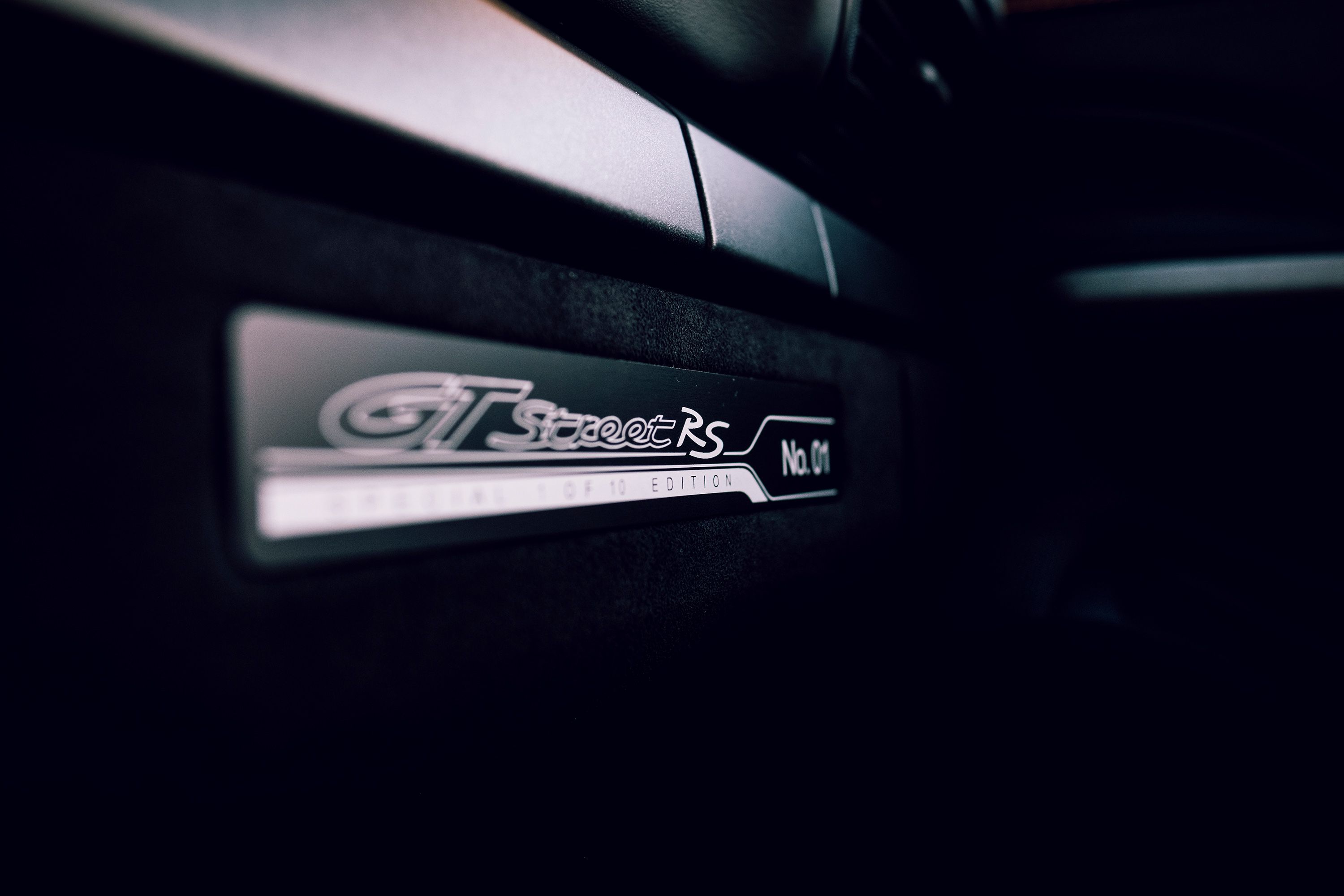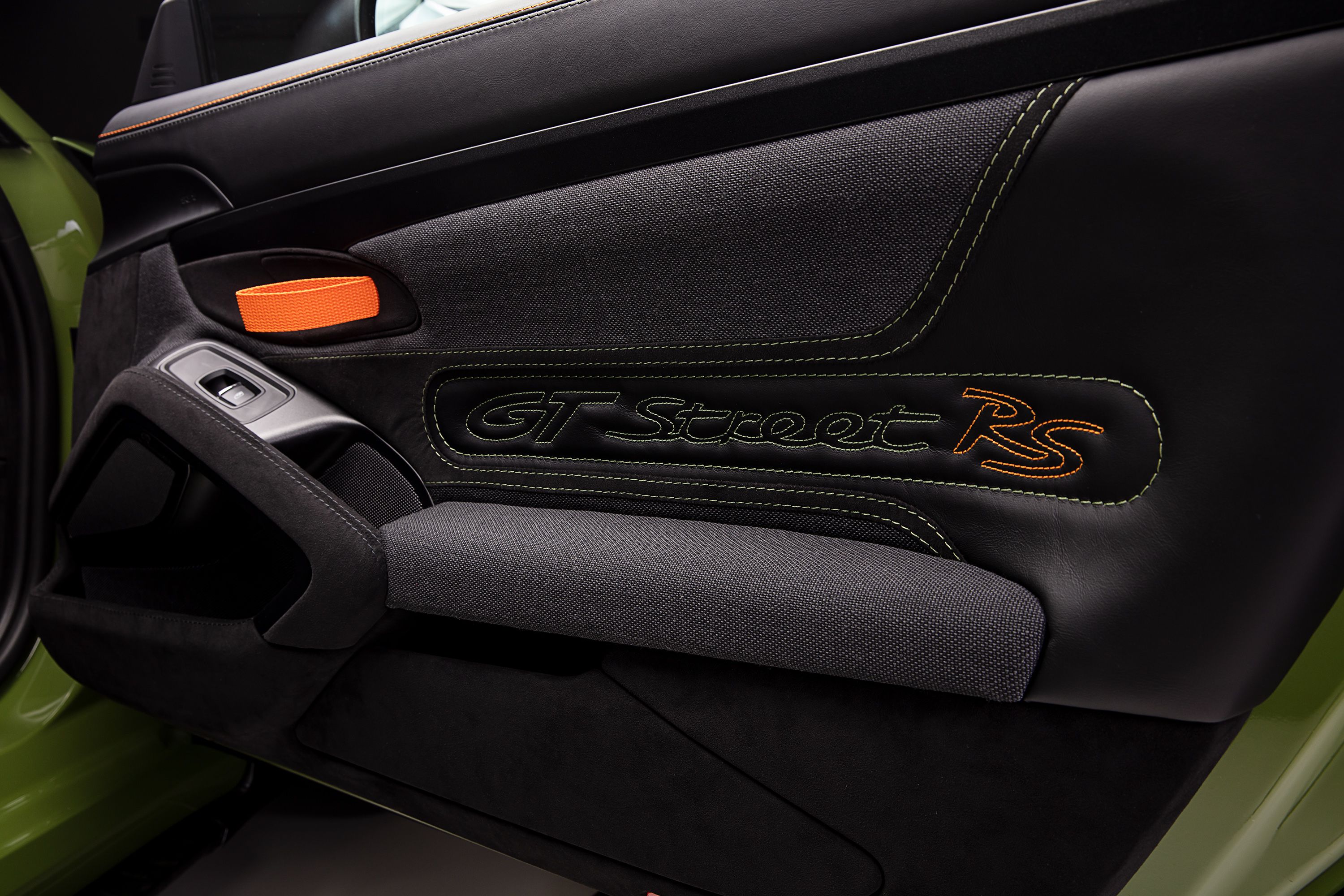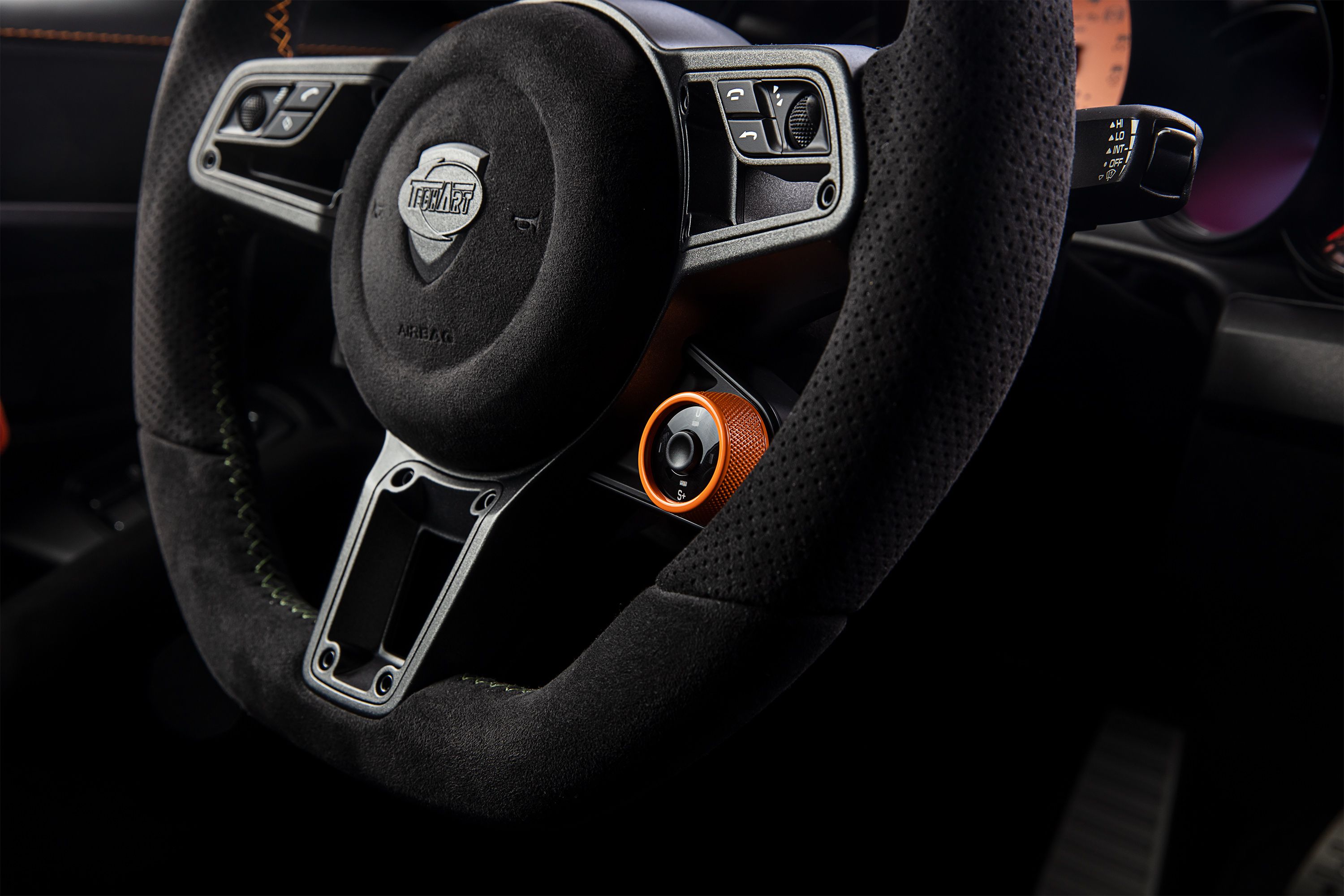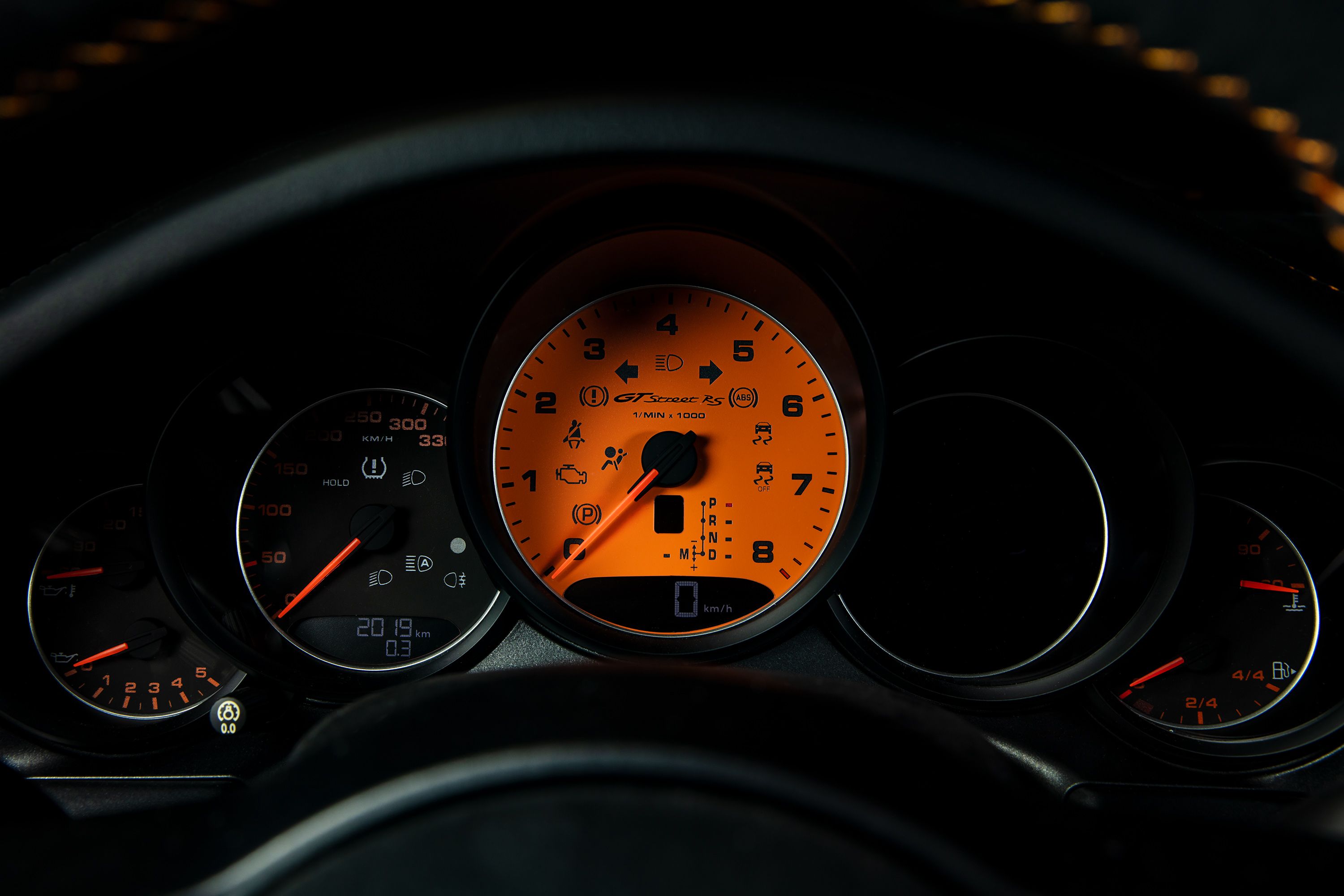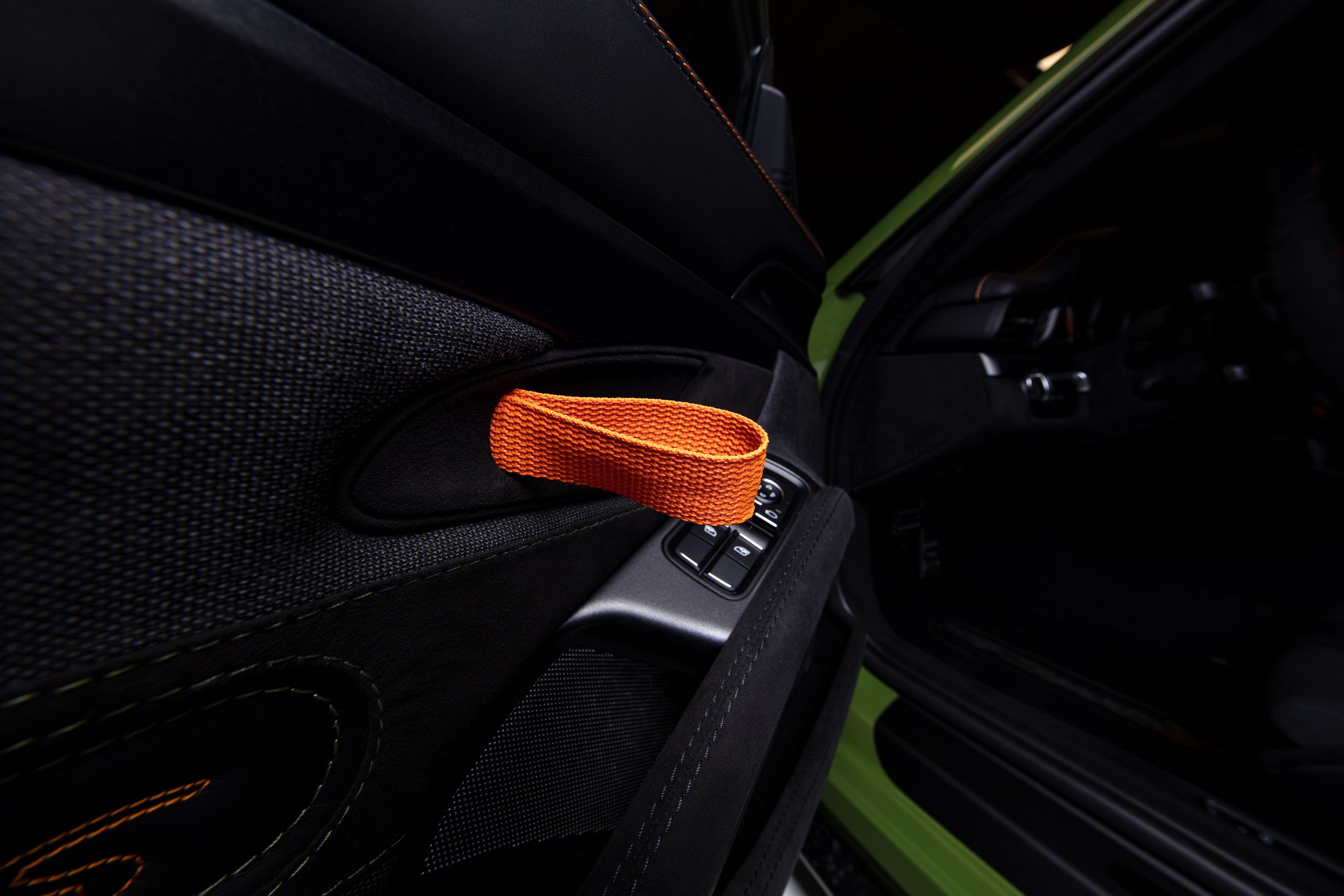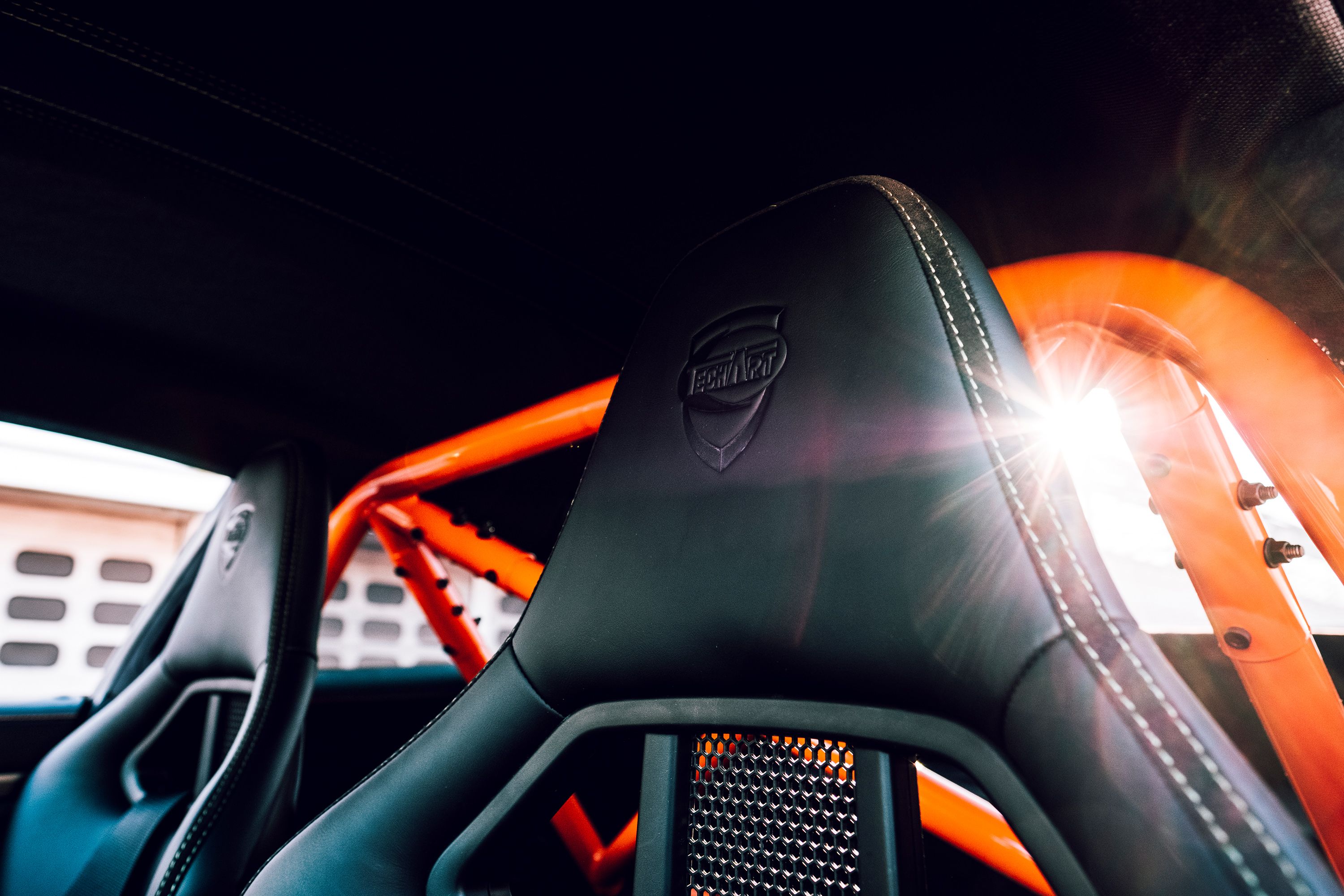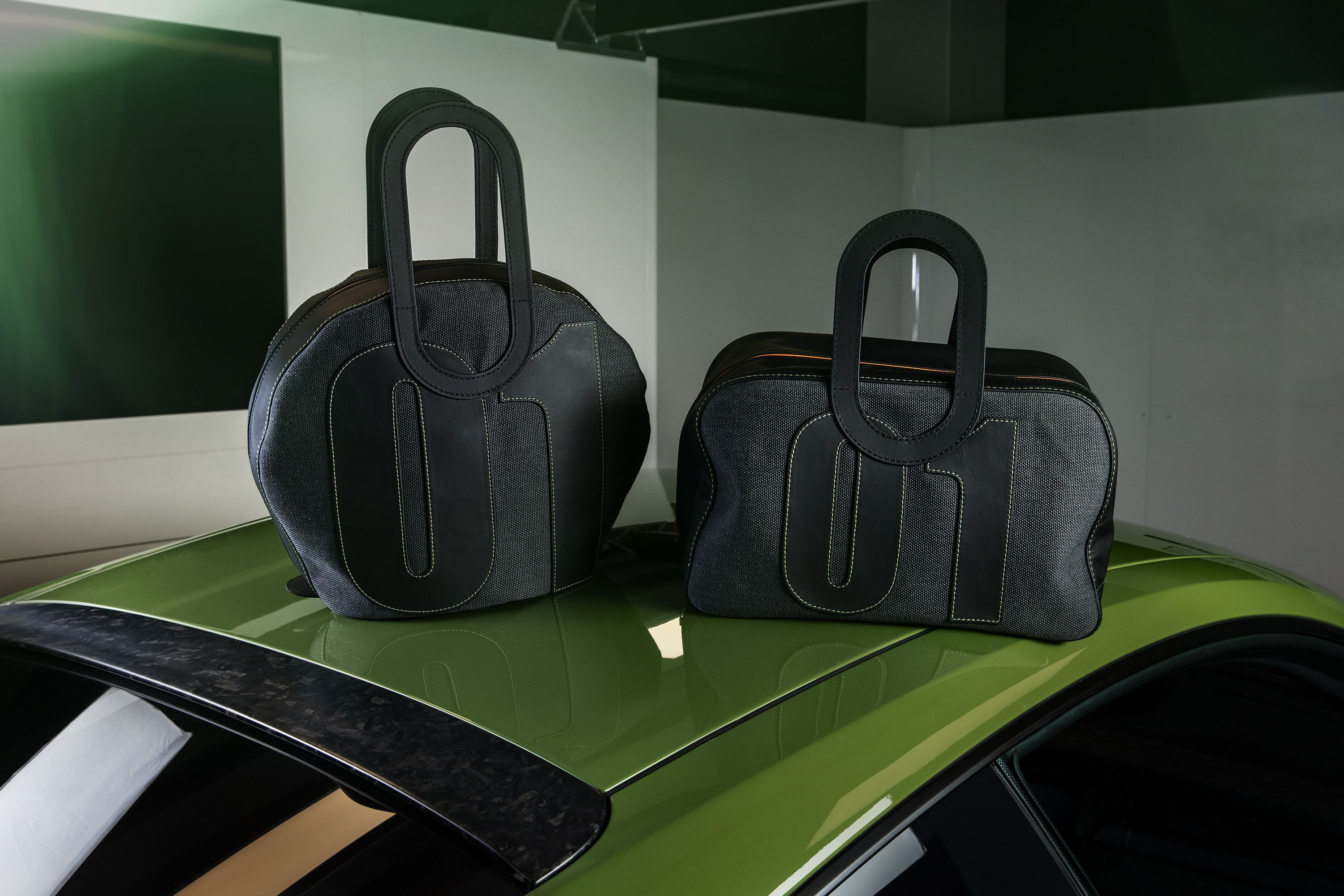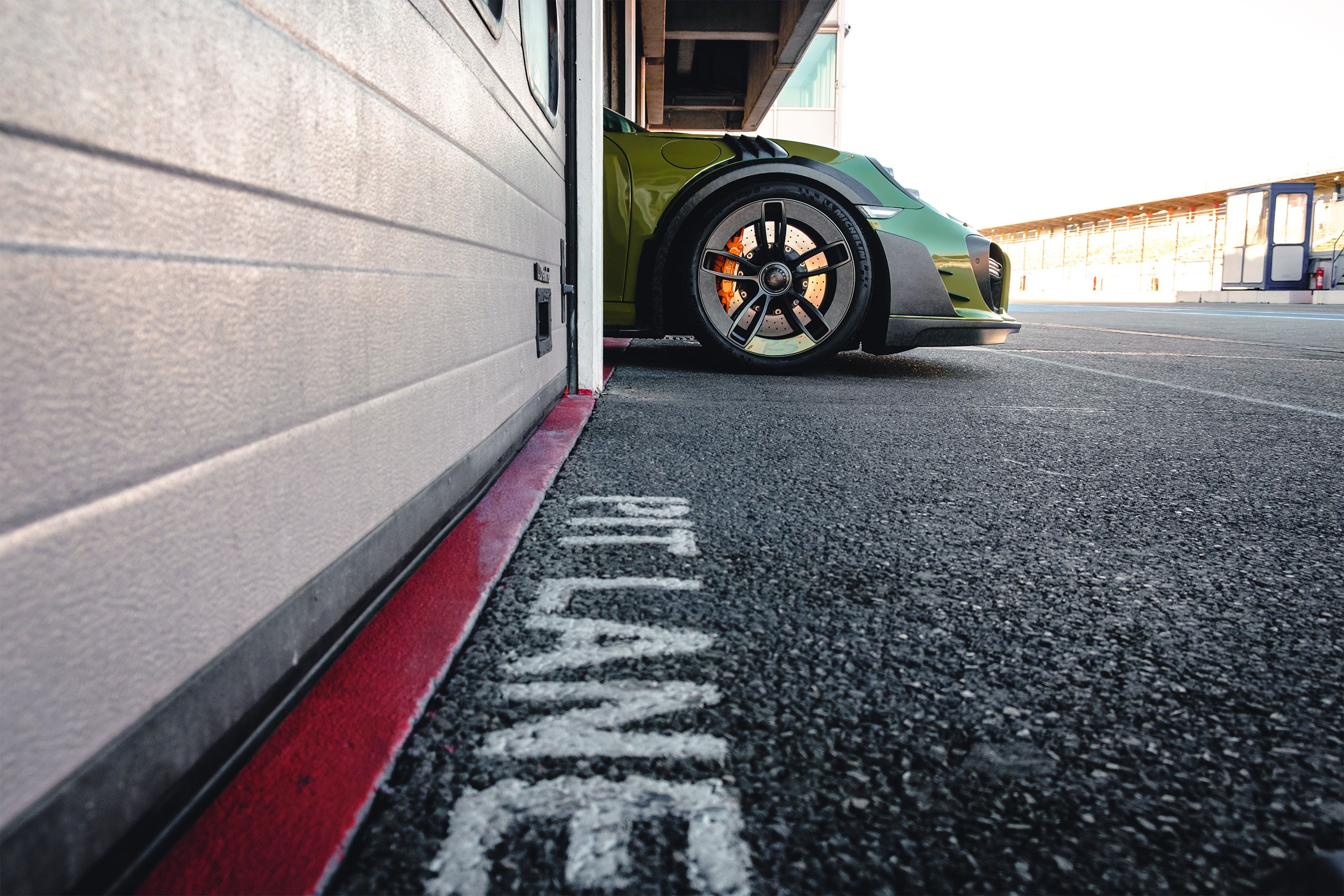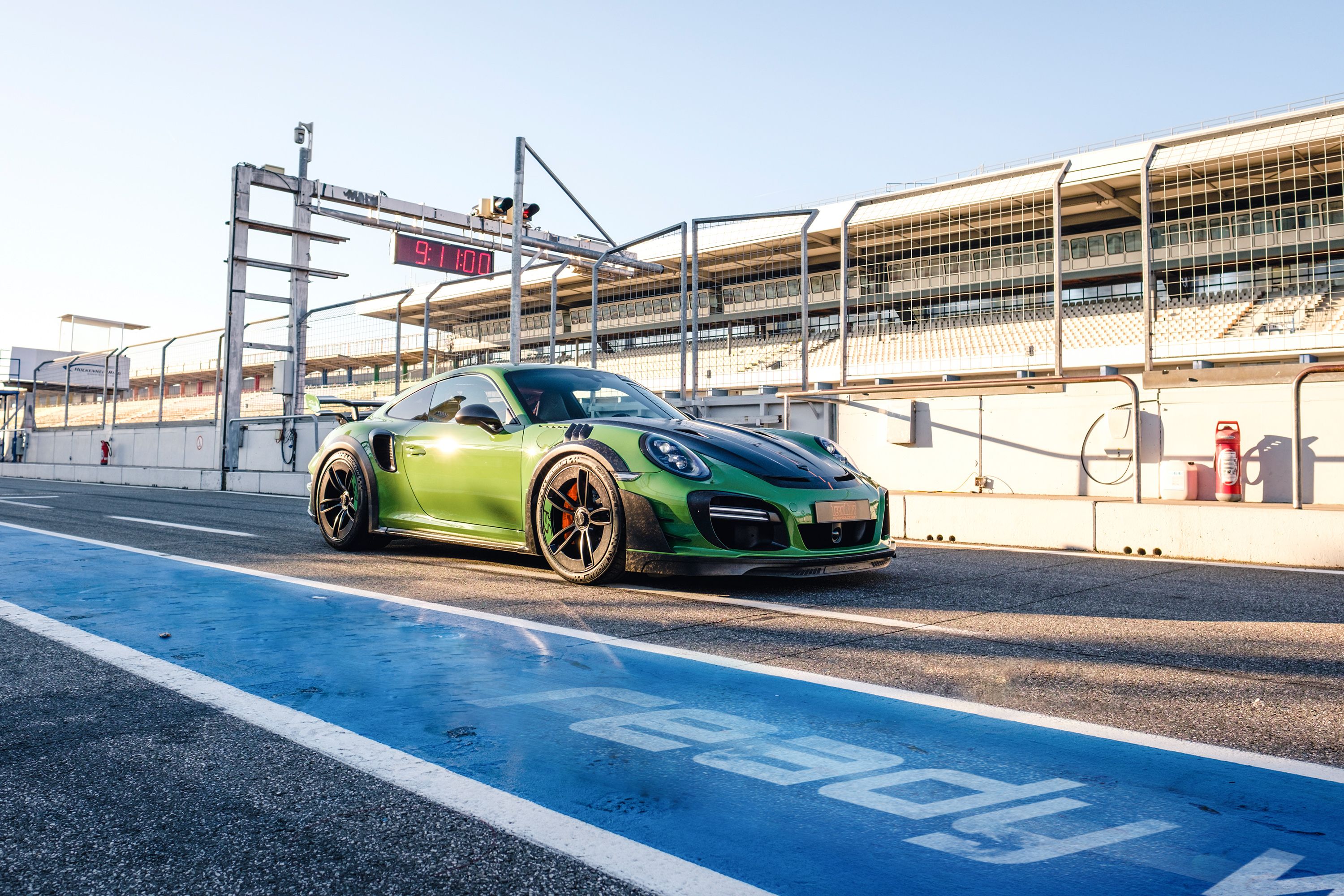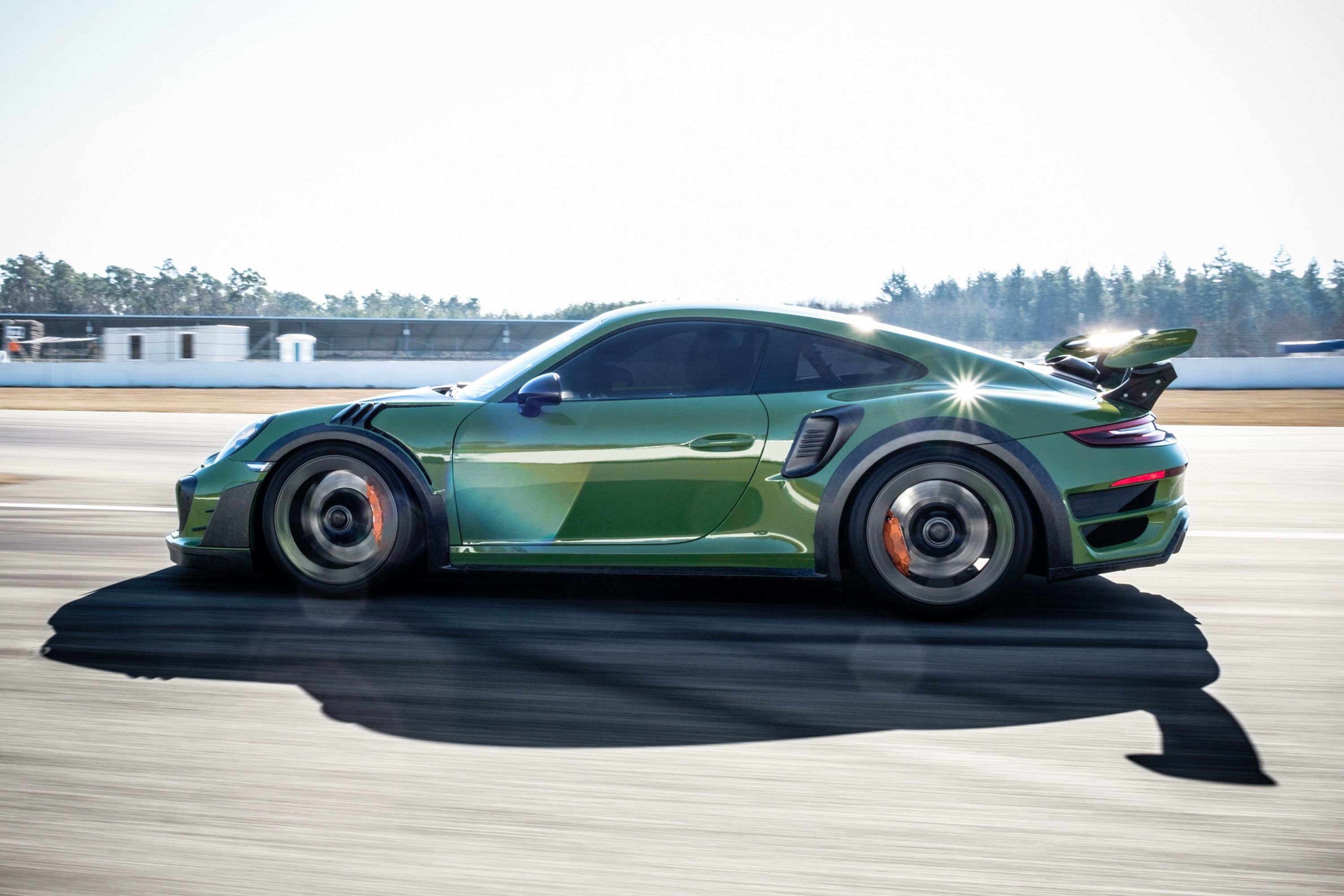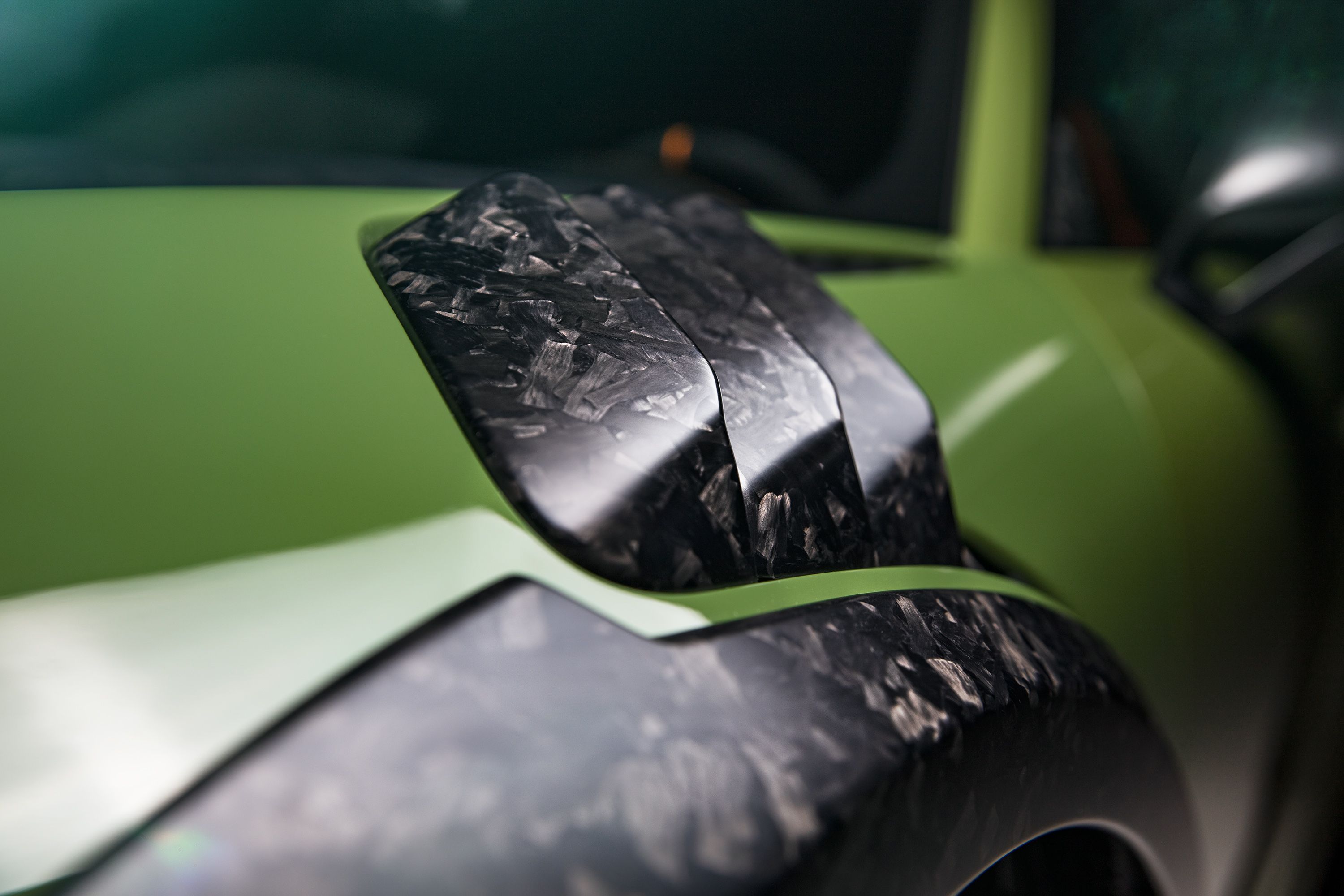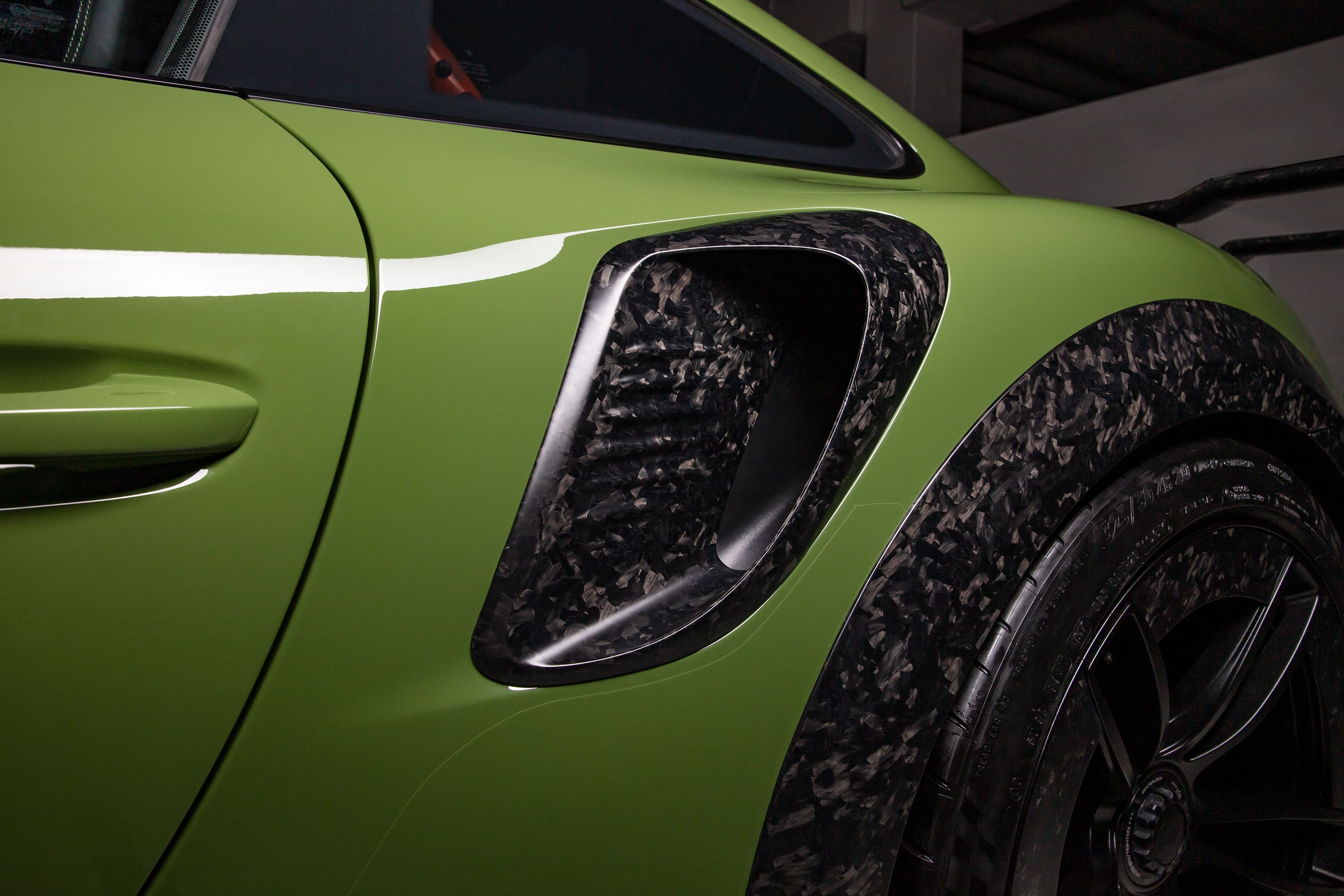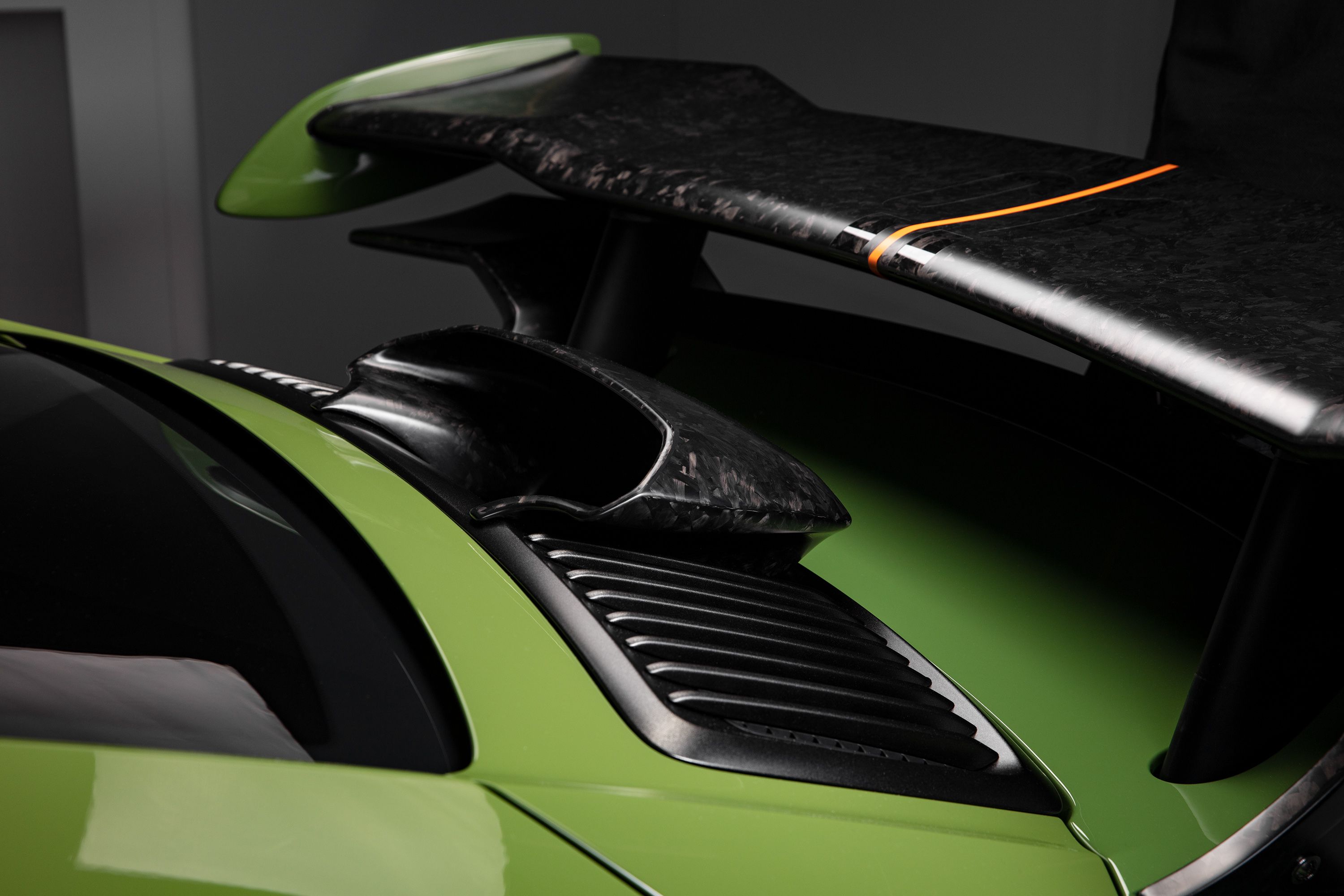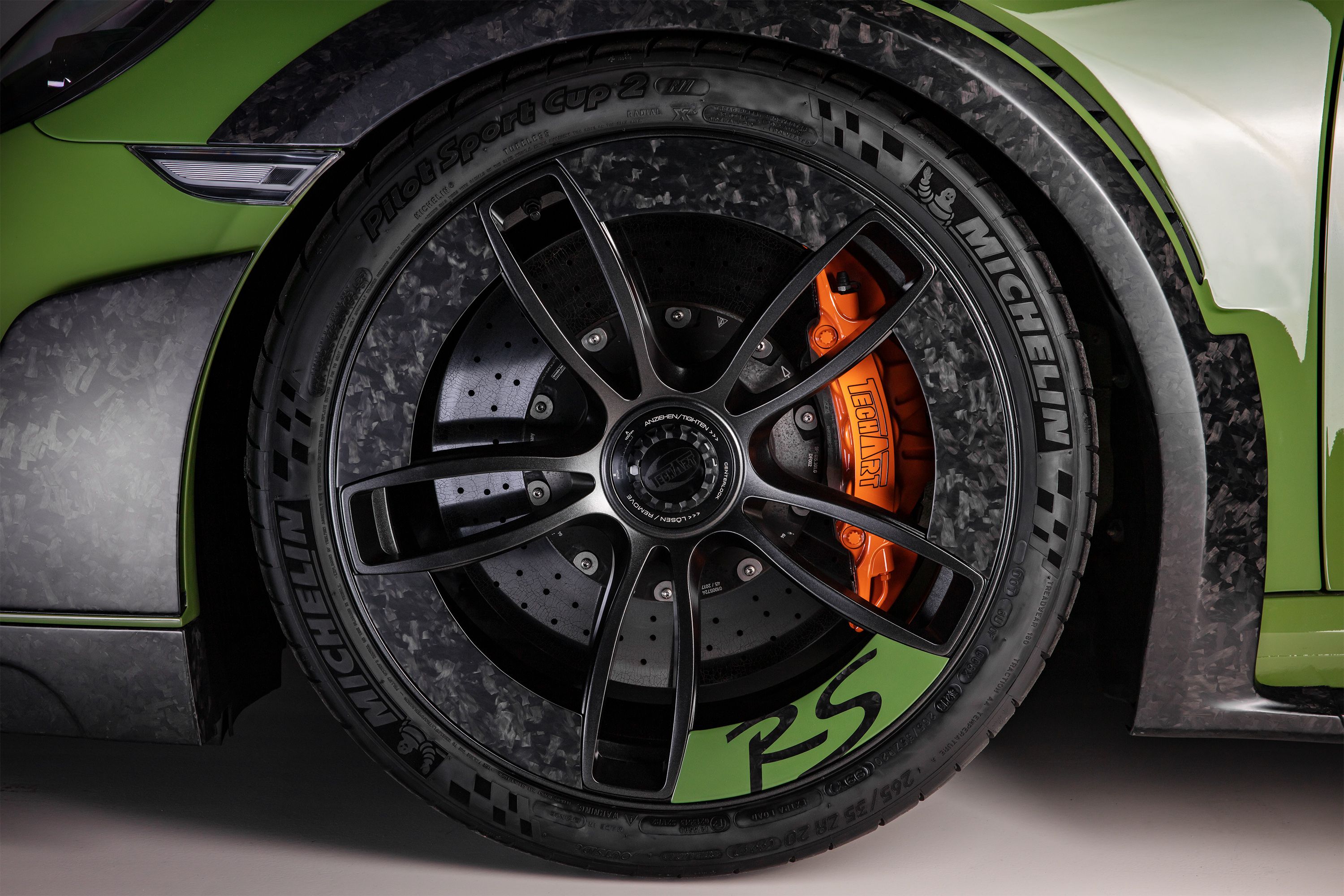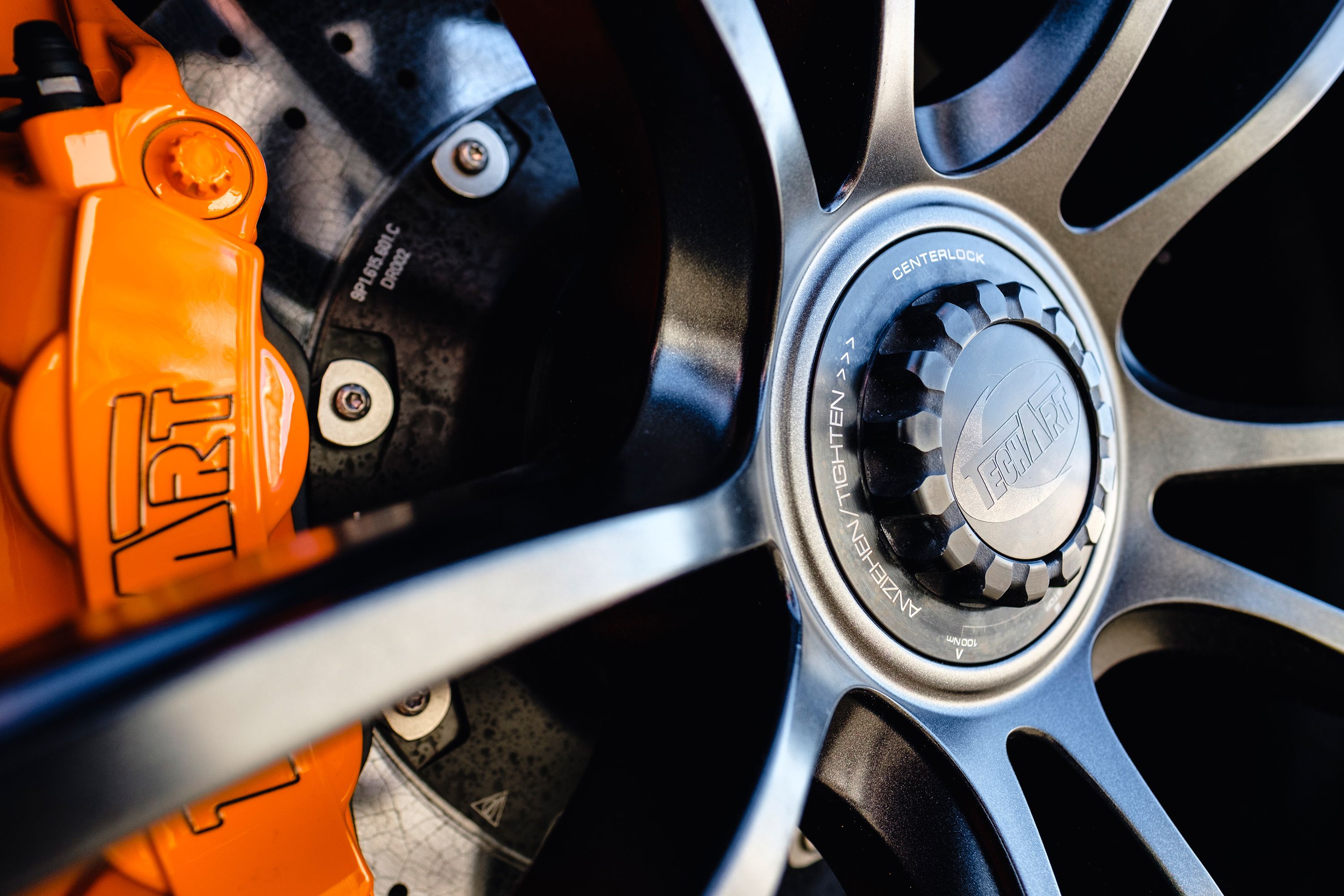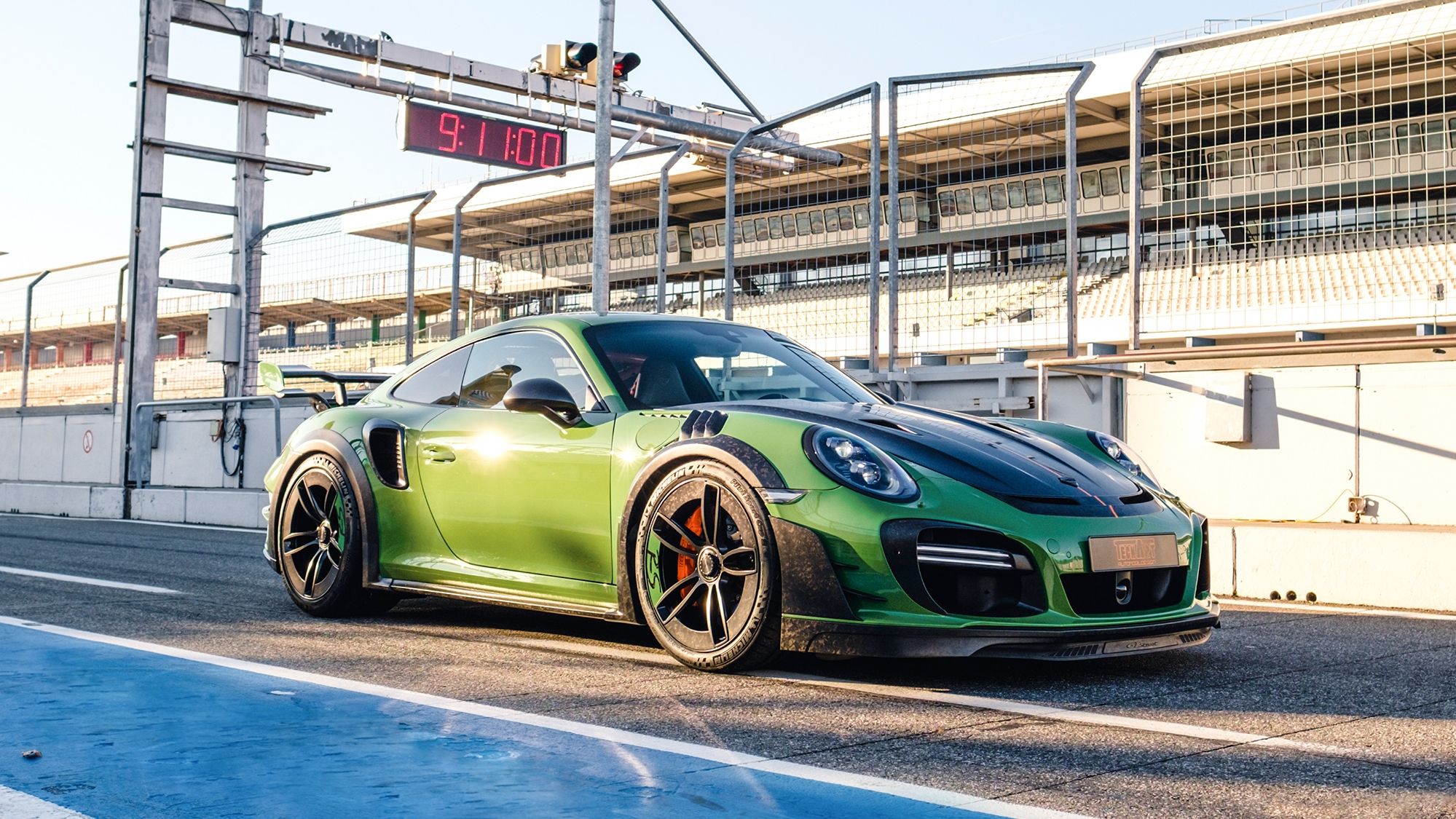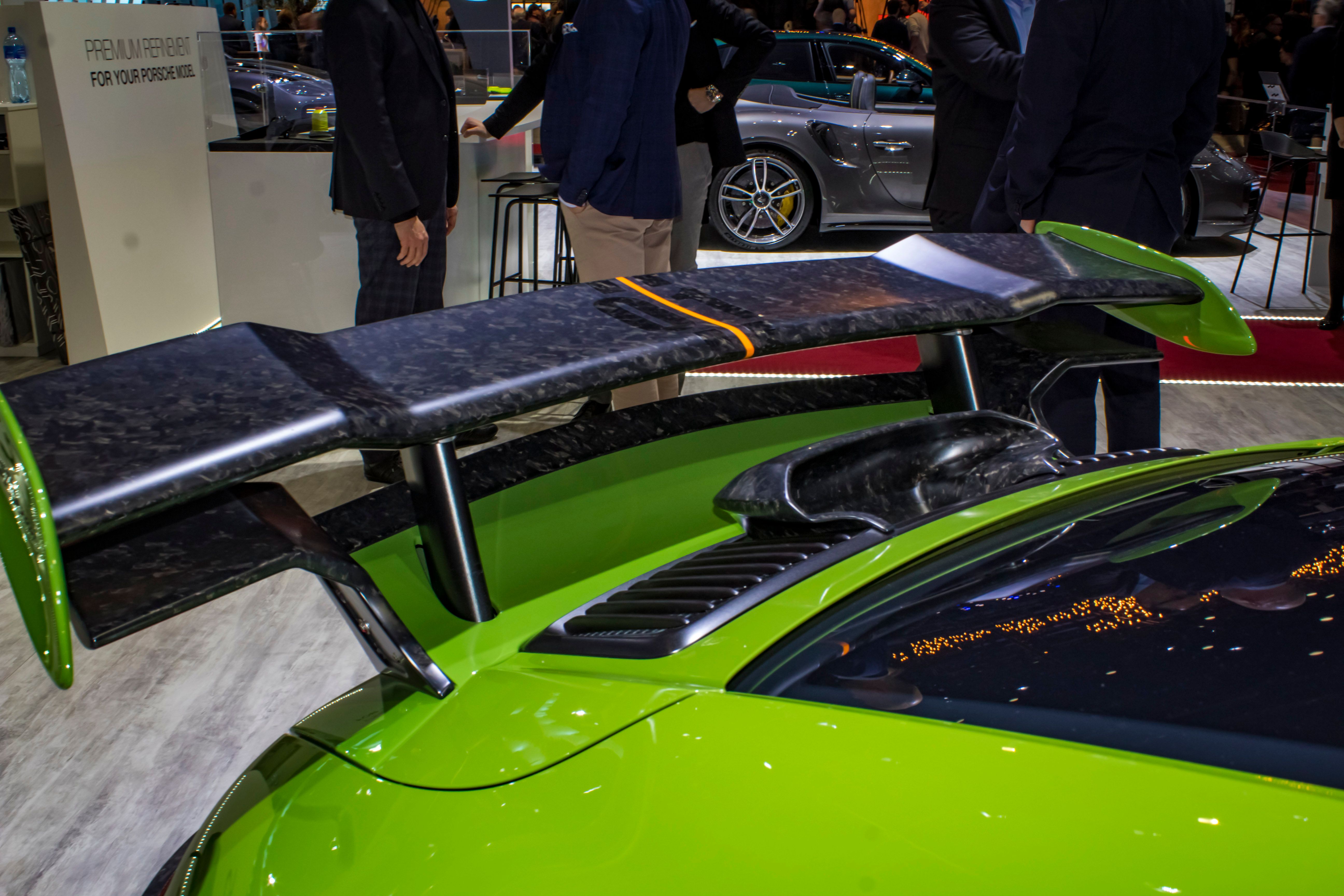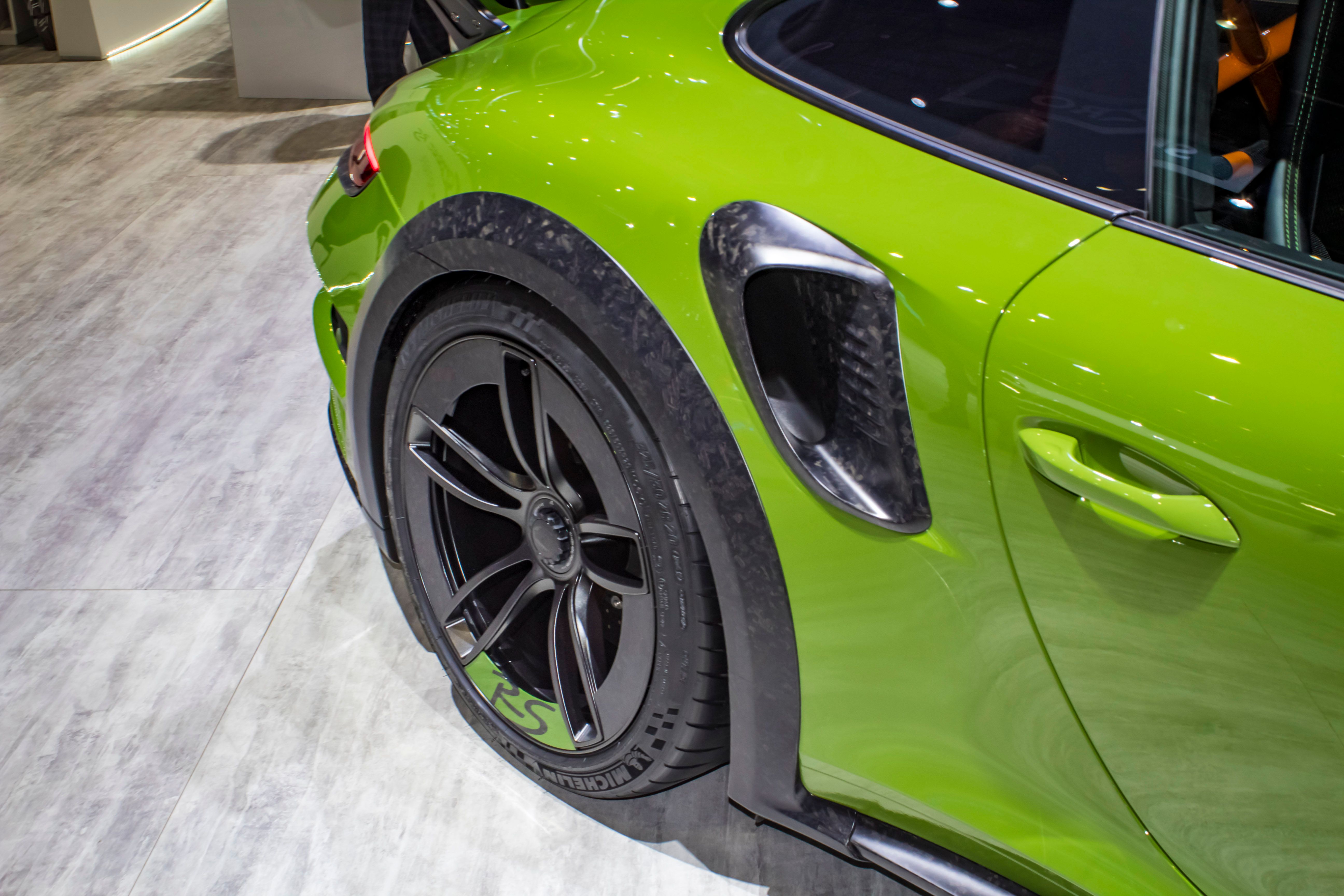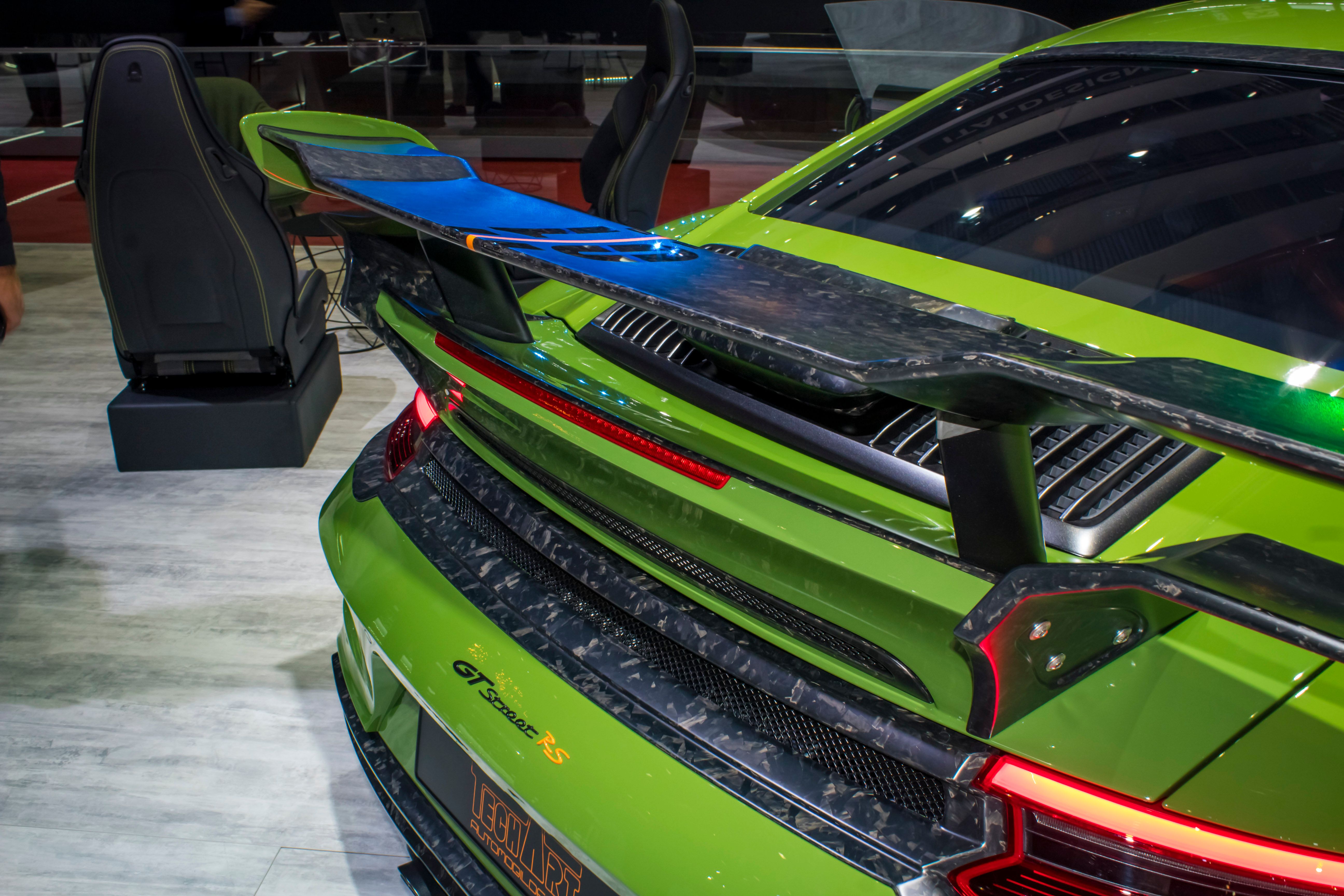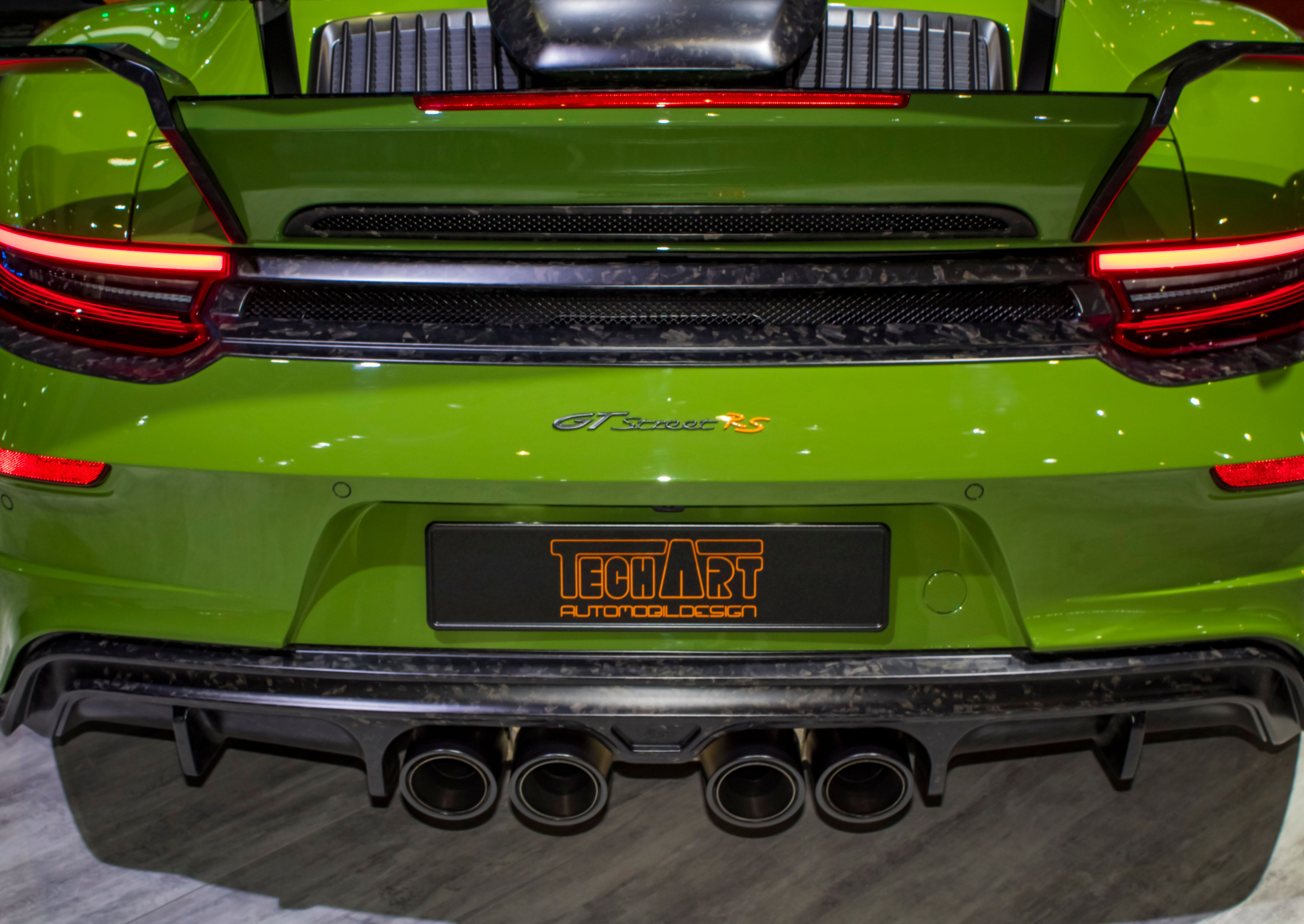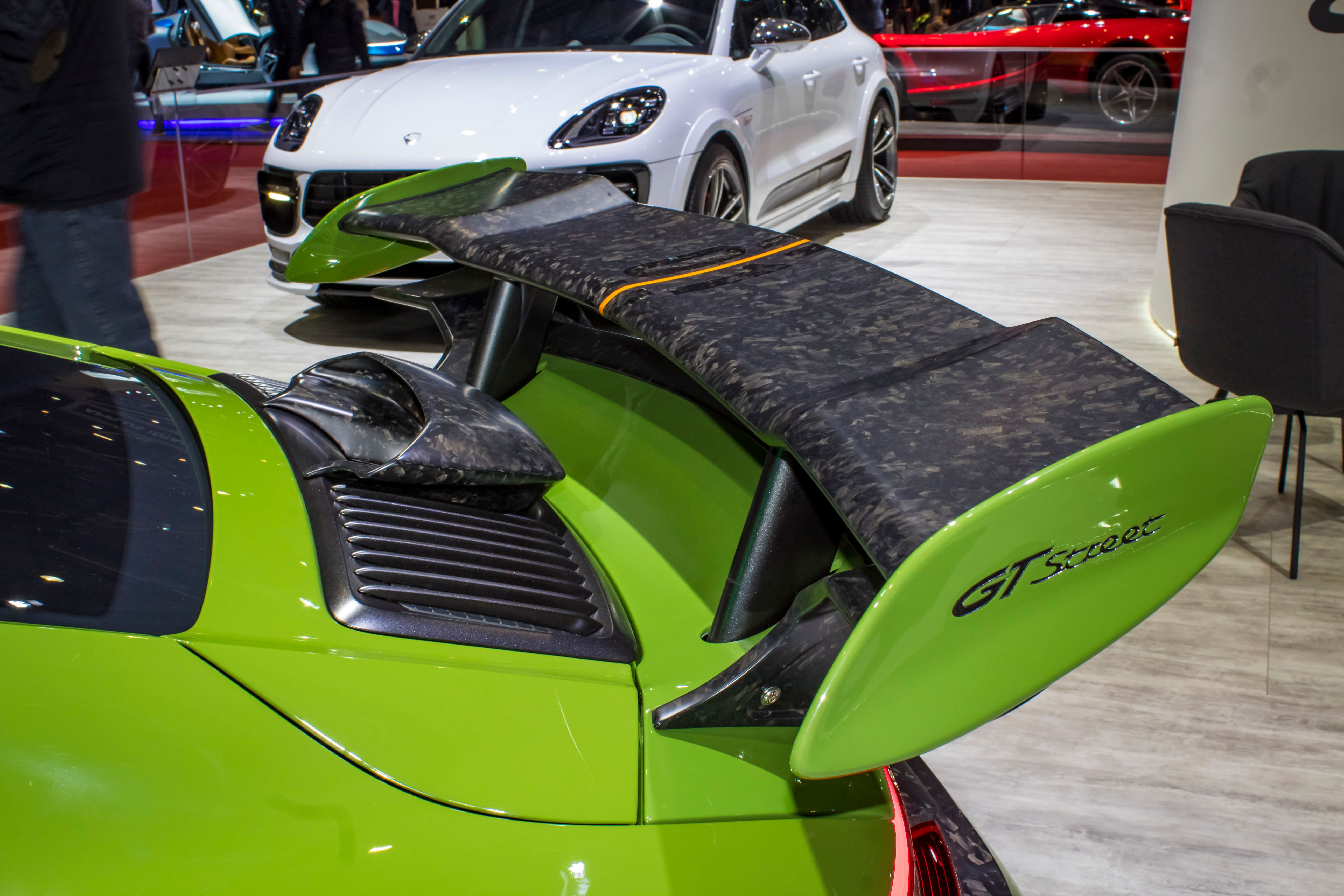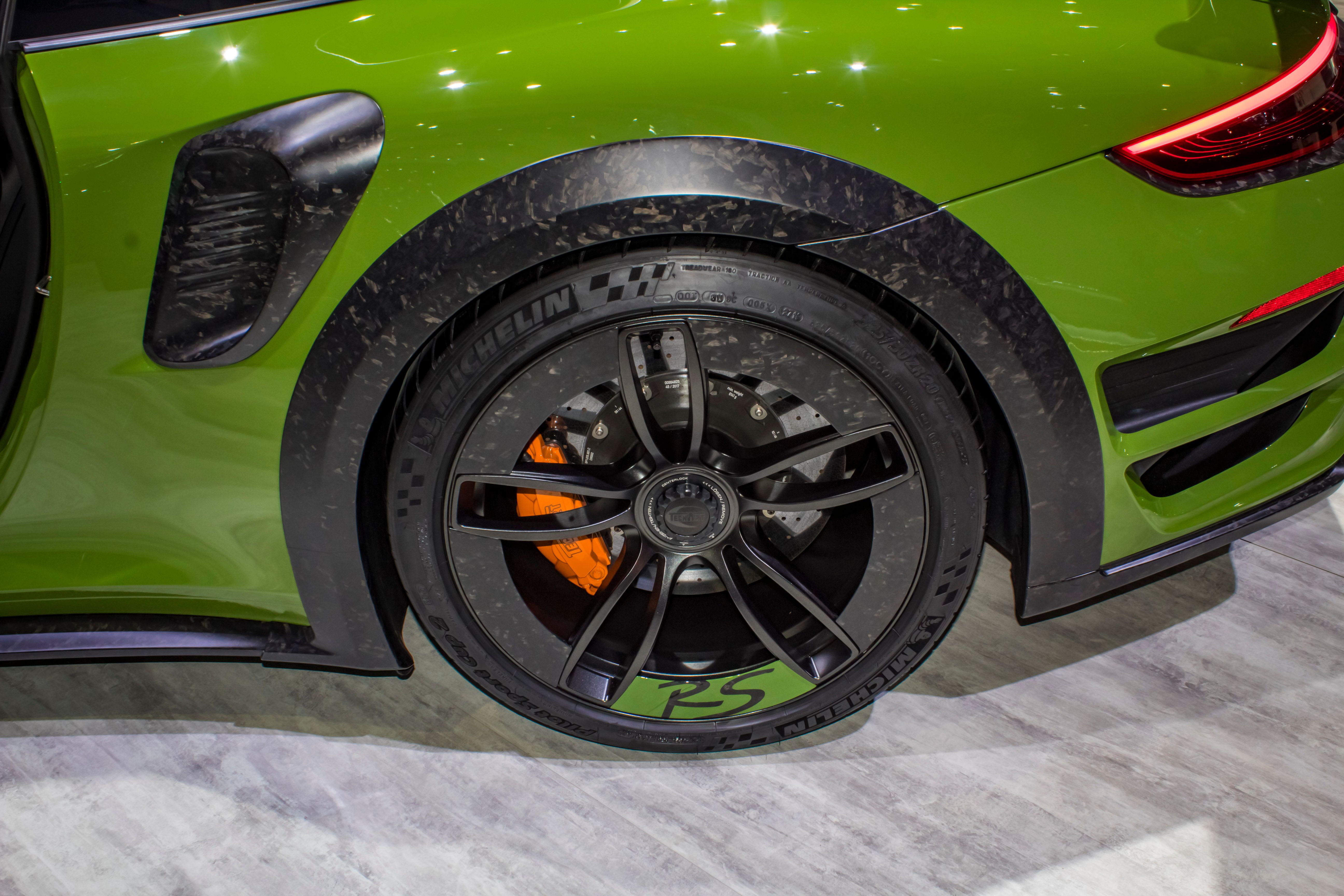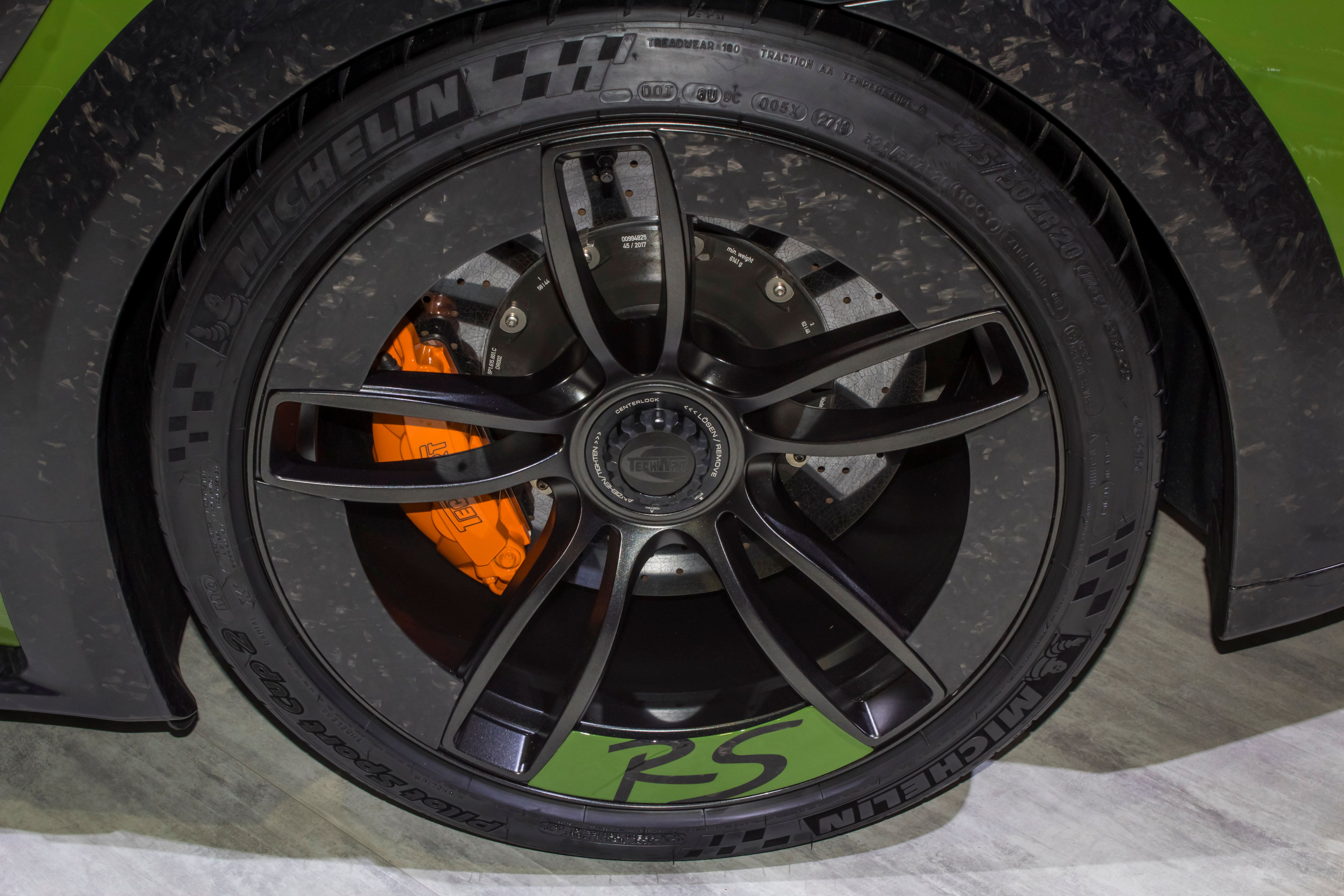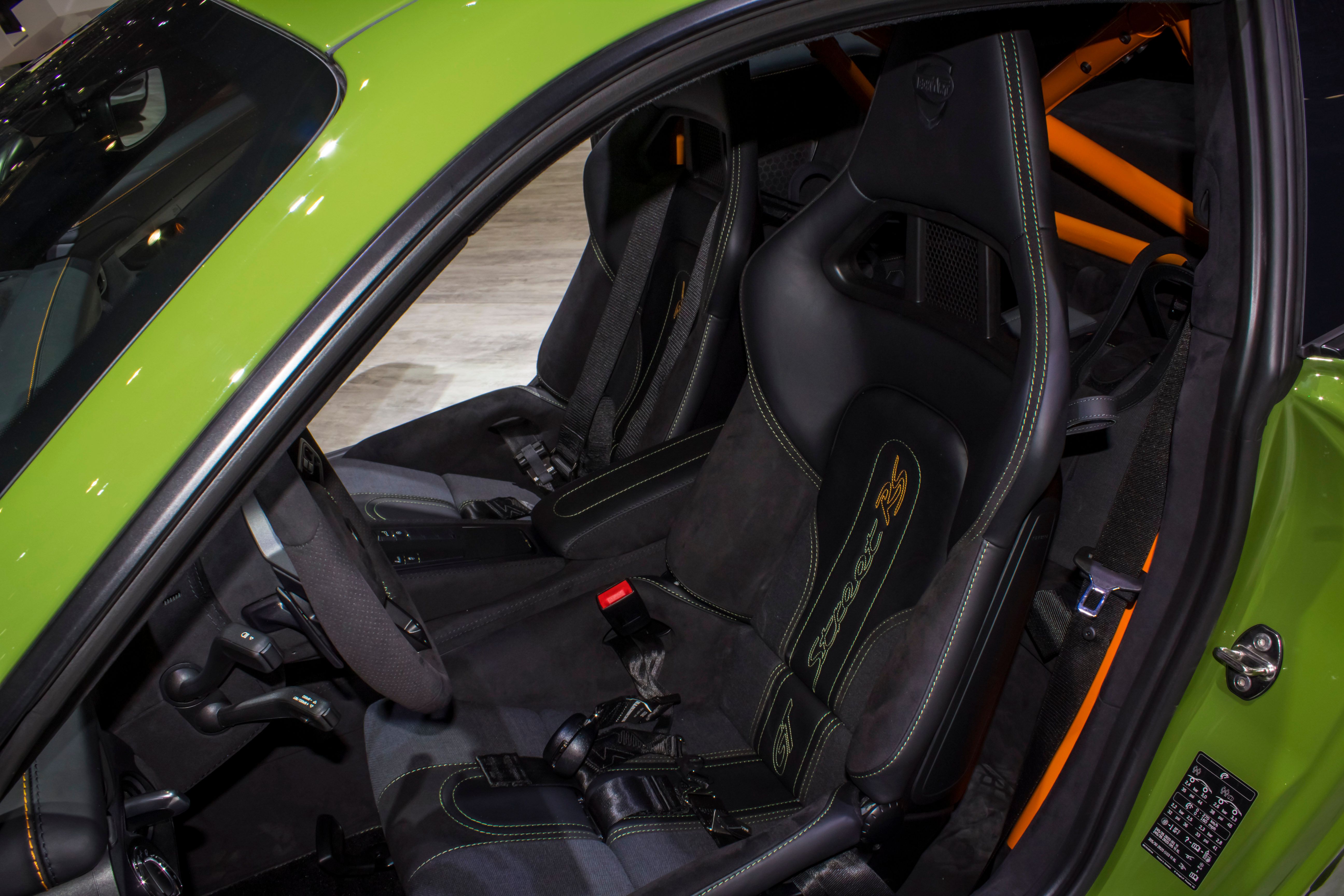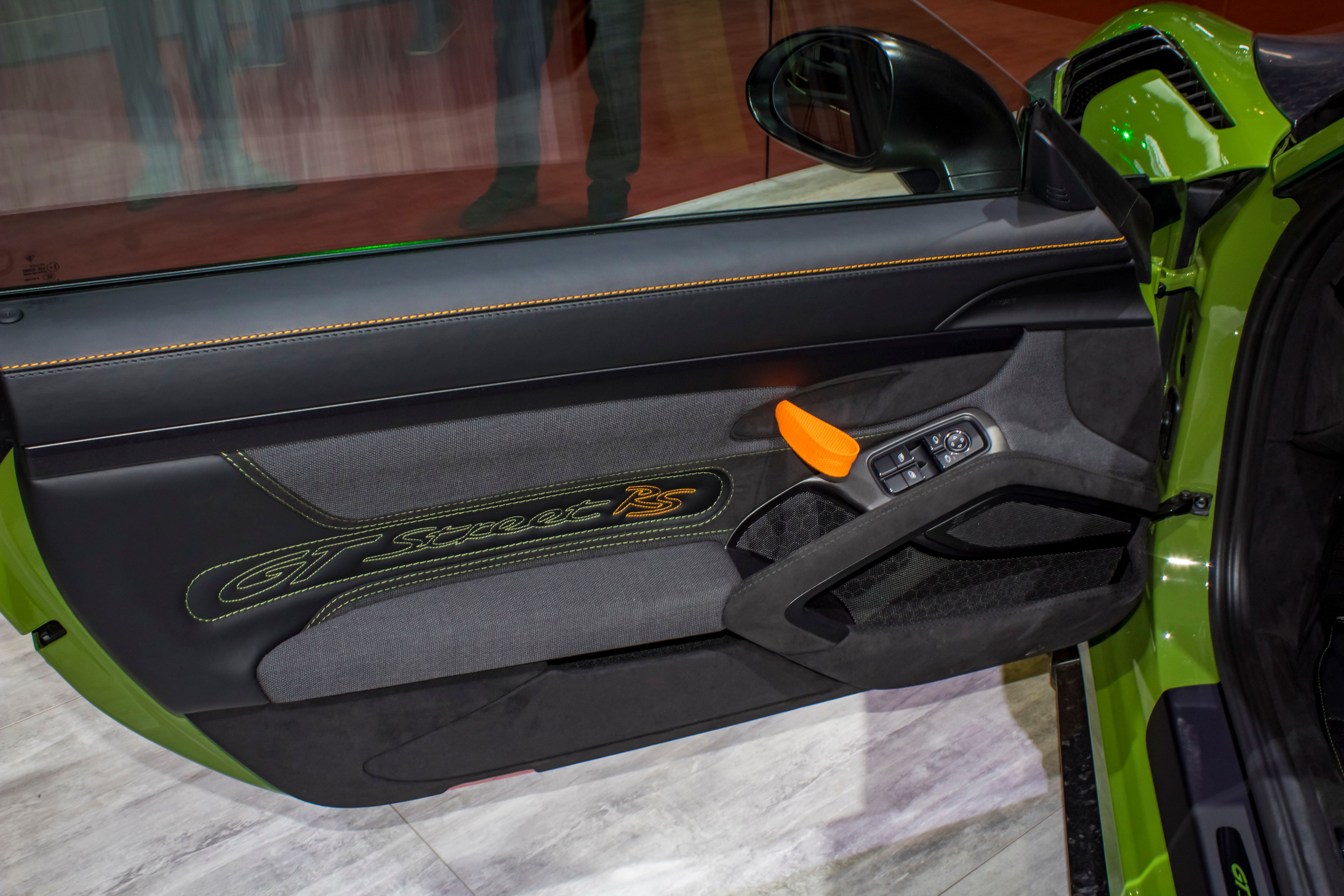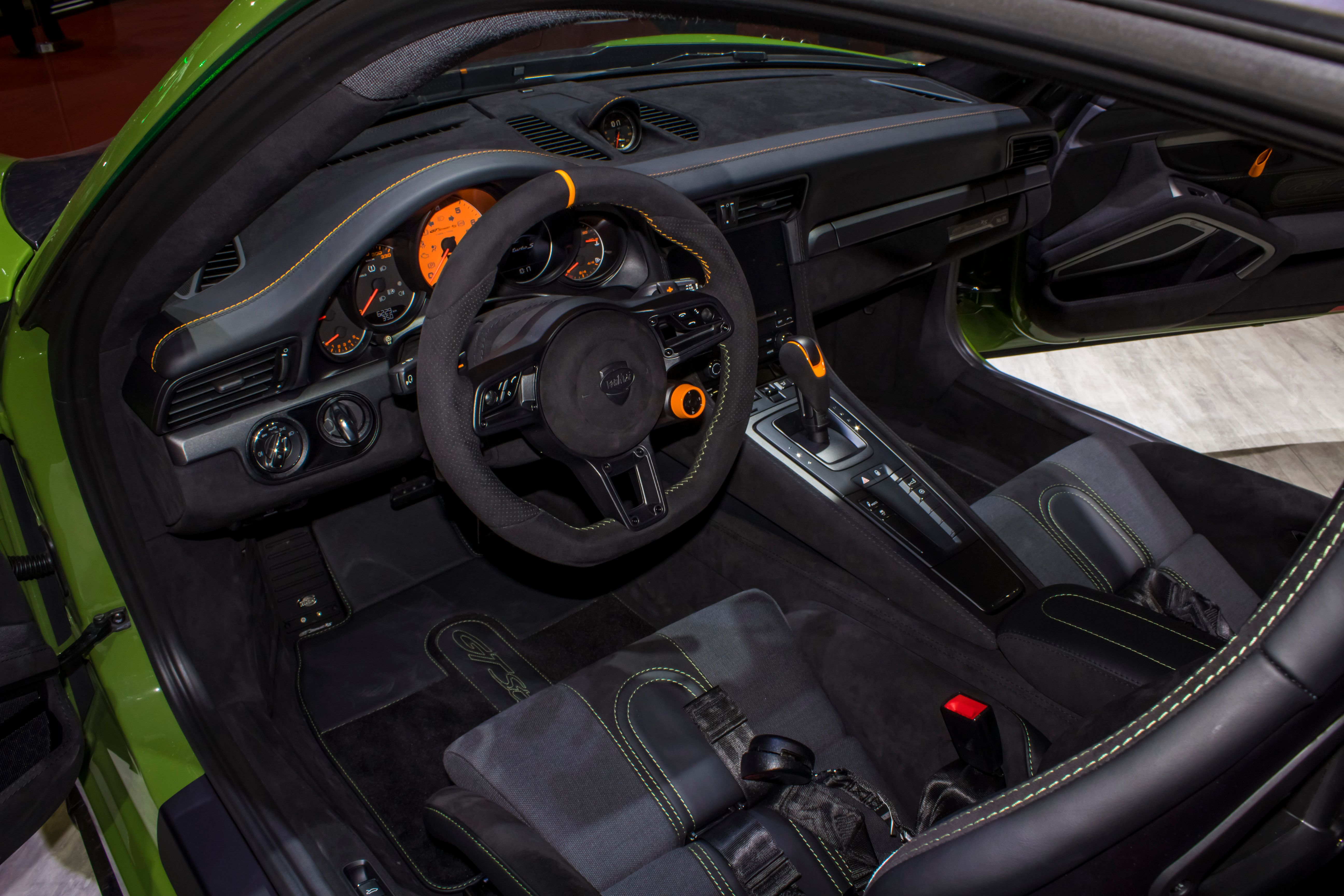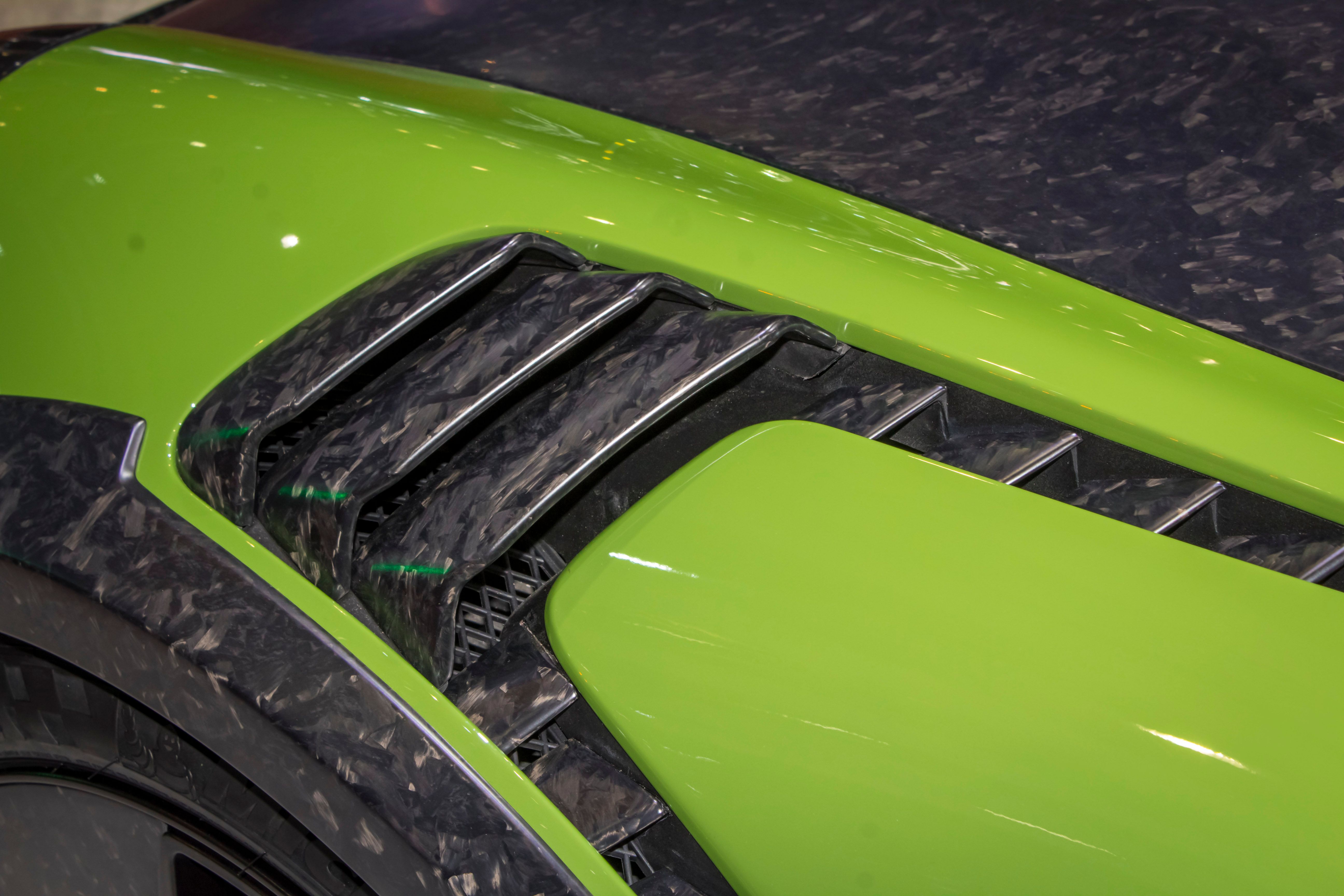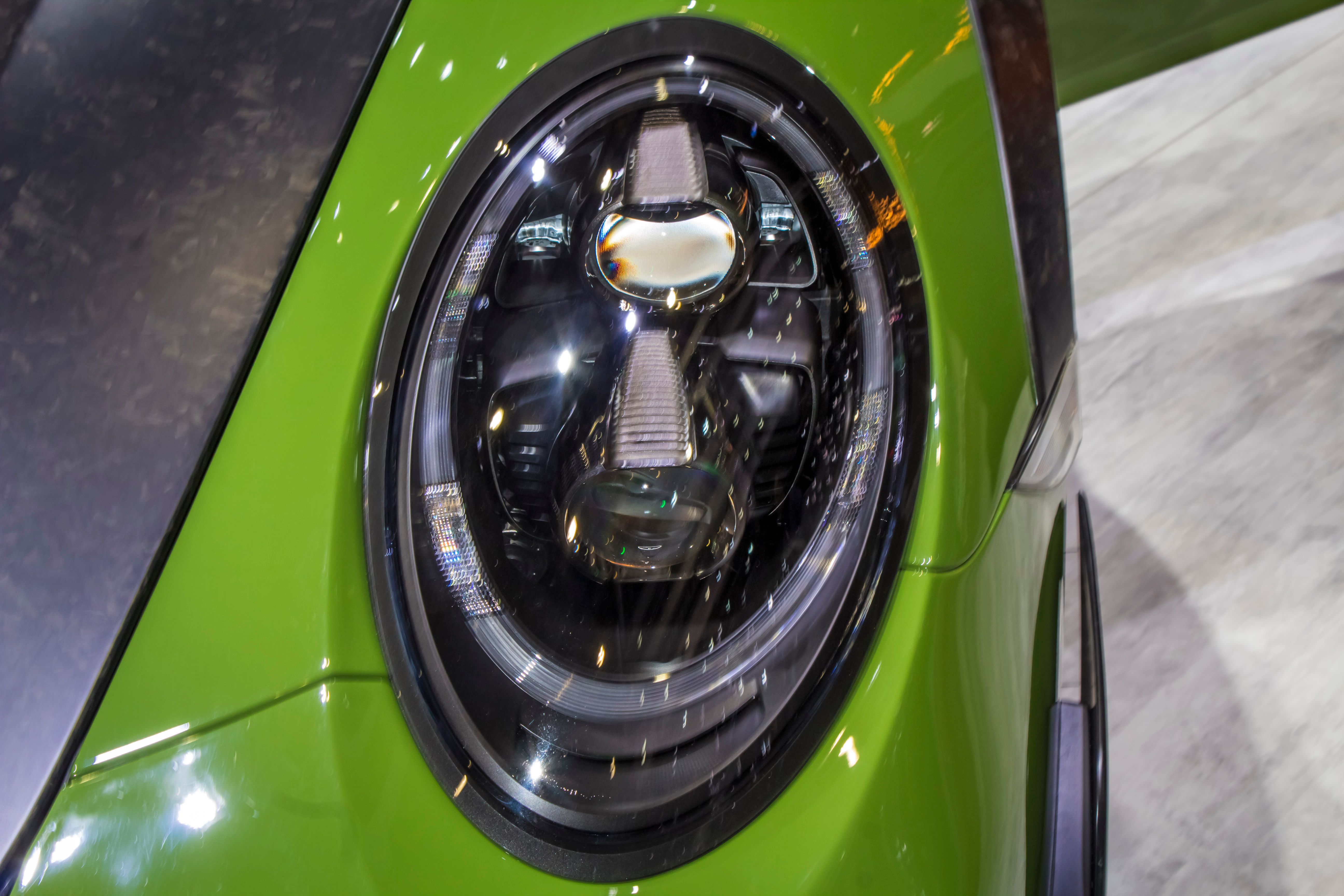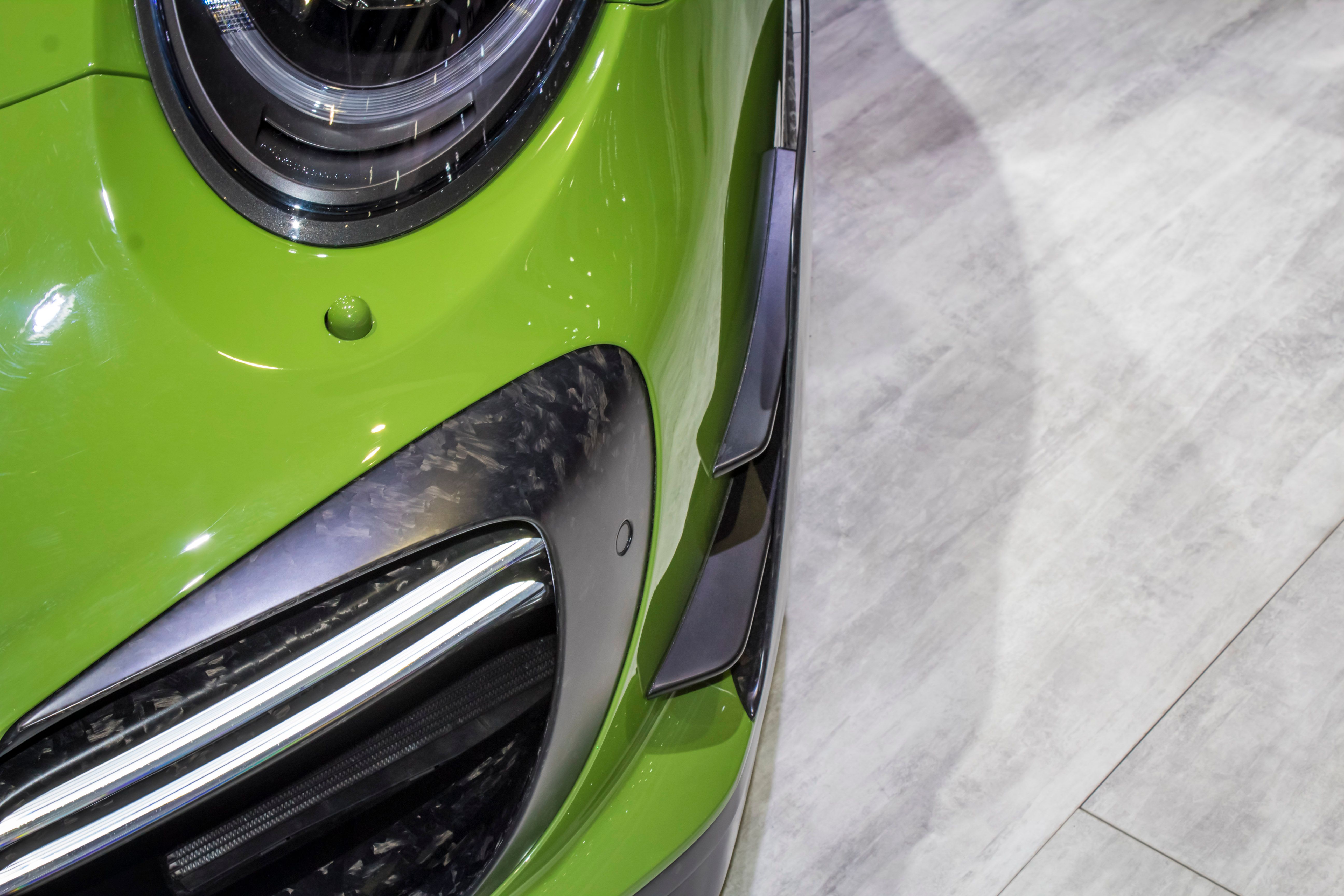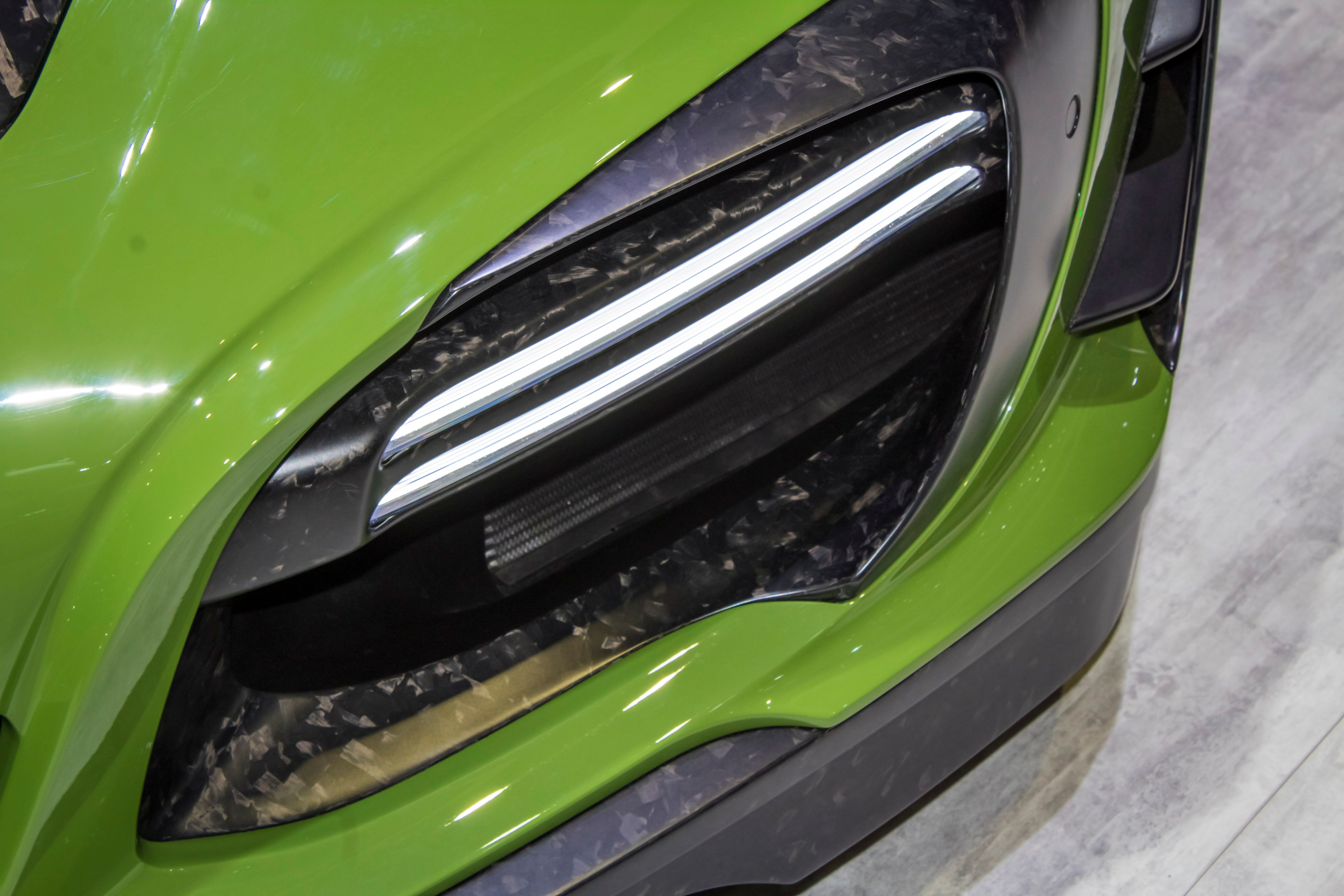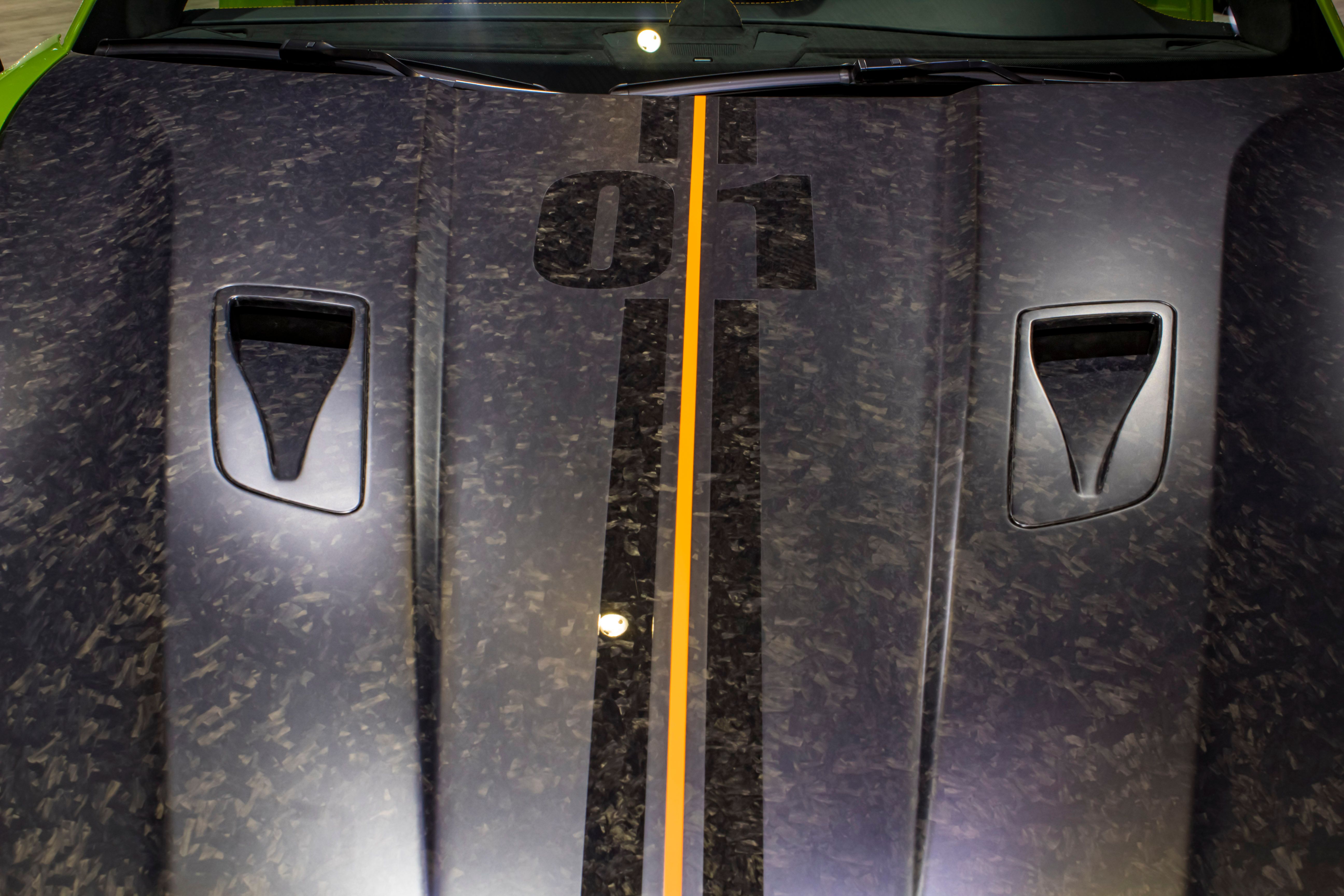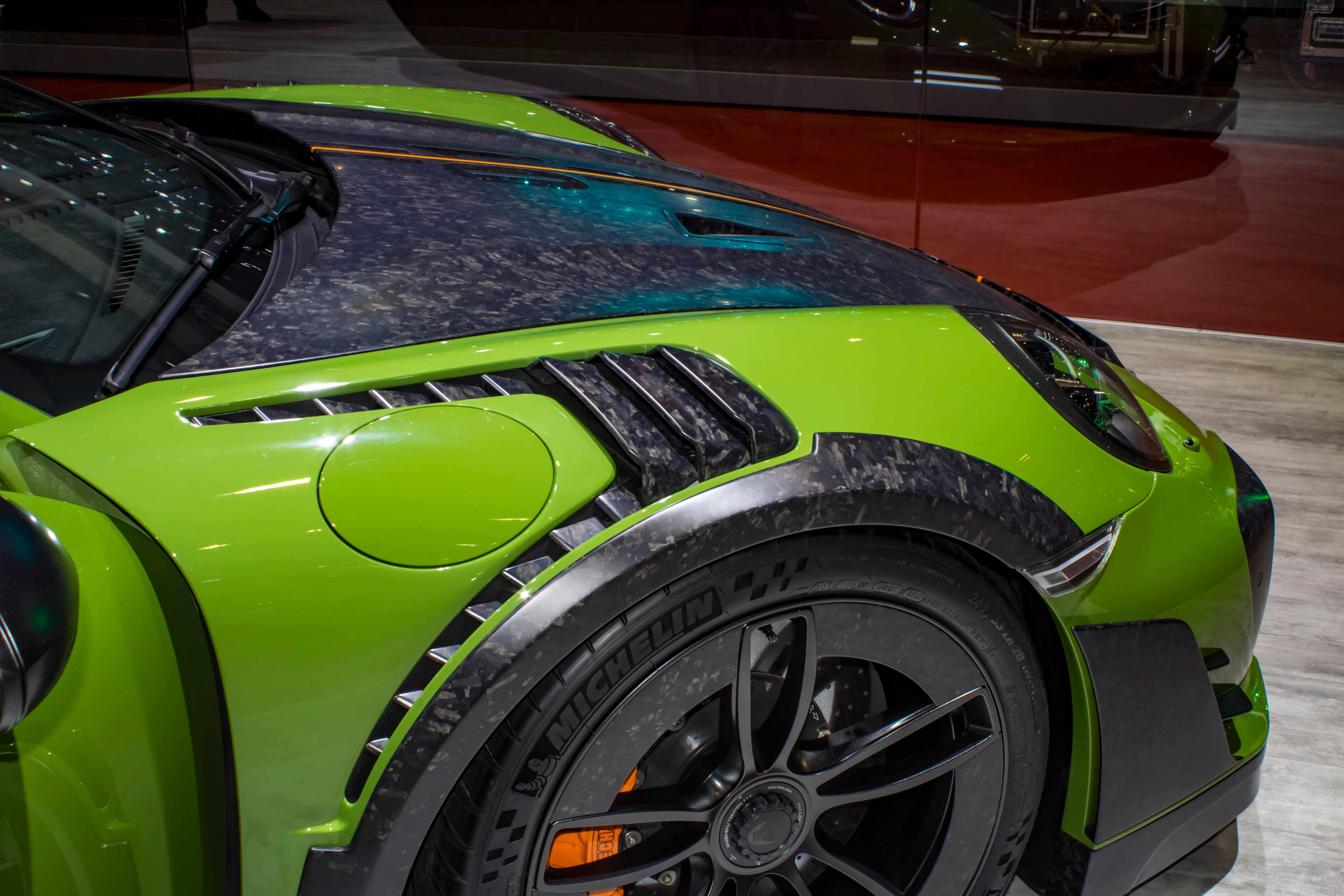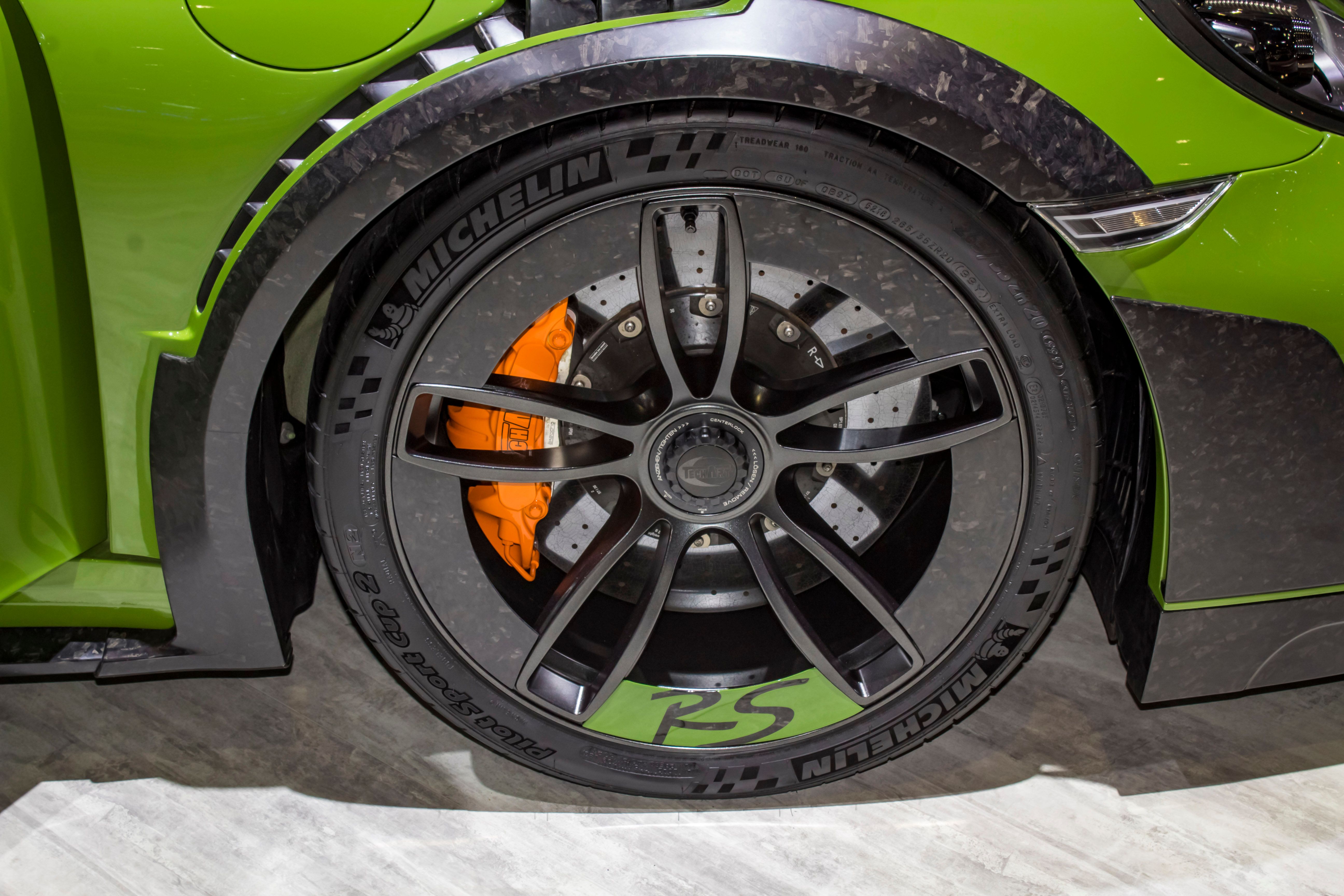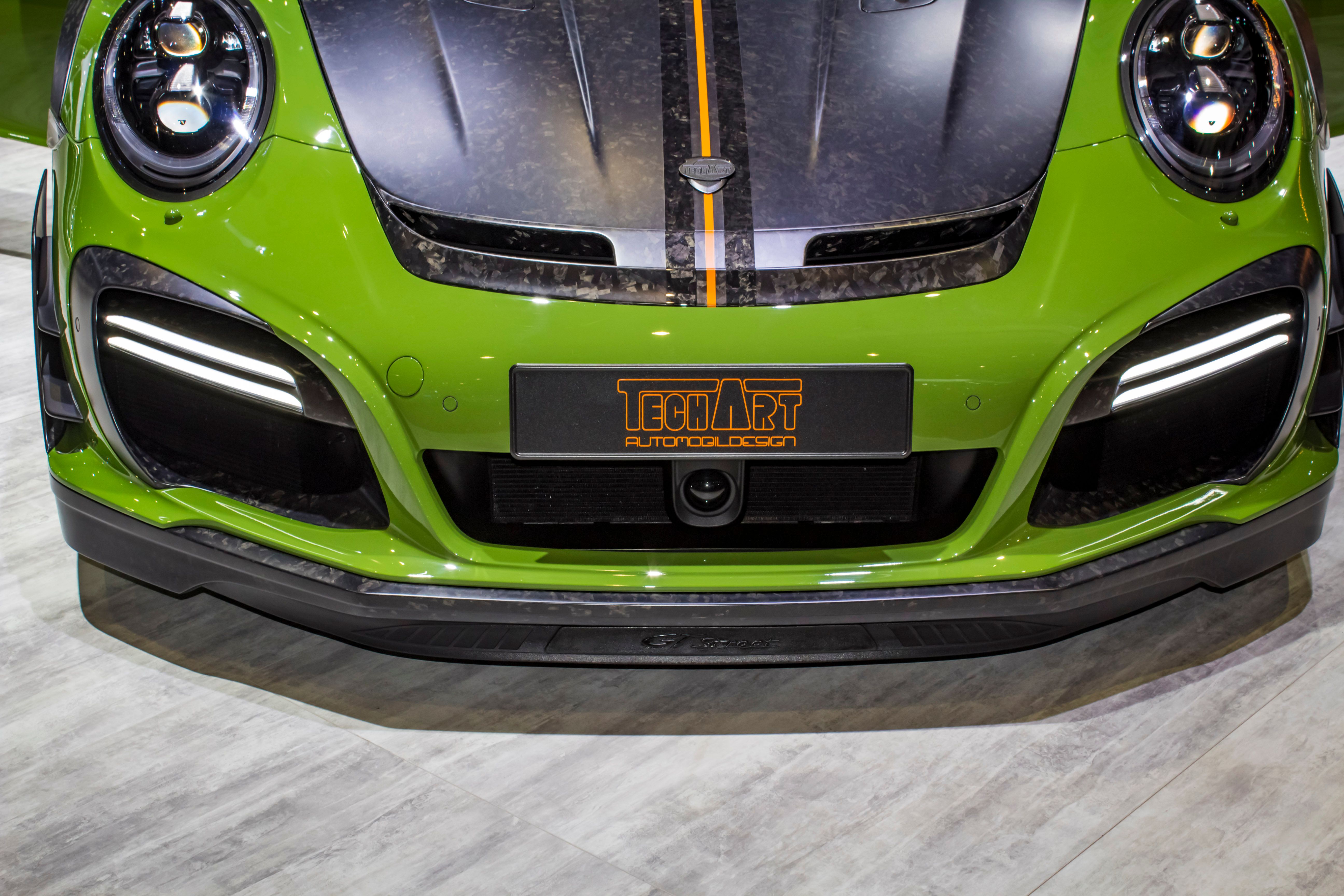TechArt is one of Germany's top Porsche tuners, and it plans to reconfirm this status by unveiling at the 89th Geneva Auto Show the latest and most insane version of its well-known GTstreet R model, this time based on the Porsche 911 (991) Turbo S and dubbed the RS. In short, it's an angry green hornet with 760 horsepower on tap, a 0 to 62 mph time of 2.5 seconds, and a top speed limited to 211 mph because that's as much as the tires can take.
Porsche is one of the of the most popular sports car manufacturers the world over. As such, there are tons of companies that cater to people who want to make their Porsche just a little bit faster and a little bit more special. Then there are firms, like Ruf or TechArt, that are recognized as independent manufacturers and whose creations stretch far beyond the might of the models used as the foundation for their projects.
TechArt's GTstreet R kit for the Porsche 991-generation of the Porsche 911 has been around for a few years. We reviewed it a couple of years ago when it was fresh out of TechArt's laboratory and came to the conclusion that "it has some strong competition from Gemballa, but it still possesses an enviable combination made up of an outstanding aero kit, a dressed-up interior, and powerful engine upgrades." Prepare, then, for something even better and much rarer as only ten will be made!
Update 3/12/2019:We’ve updated this review with images of the 2019 Porsche 911 Turbo GTstreet RS by Techart taken during the 2019 Geneva Motor Show. Check them out in the gallery at the bottom of this page!
2019 Porsche 911 Turbo S GTstreet RS by TechArt
- Make: Array
- Model: 2019 Porsche 911 Turbo S GTstreet RS by TechArt
- [do not use] Vehicle Model: Array
Exterior
For 32 years TechArt has been striving to be, as it says, "the international premium brand for individualization of any Porsche model." Many of their kits, especially those for the Cayenne, Macan, and the Panamera showcase a great deal of restraint. You get some add-ons to the front and rear bumpers, and the rocker panels, bigger wheels, and more oomph. However, the Germans go above and beyond when it comes to their tuning programs for Porsche's properly fast cars.
But this wasn't the case when the company started out, back in 1987, building bespoke interiors for a number of car brands. They also offered that year a light exterior tuning kit for the quite popular Porsche 928 followed in 1988 by a kit for the 964-generation 911. The business started to grow from that point on and, by the turn of the millennium, the company boasted separate departments for design and performance to streamline the creation of new cars as an independent manufacturer.
Arguably the first hit for TechArt was the CT3 kit for the 911, not to be mistaken with the CTR3 - the third evolution in the CTR lineage - from Ruf. Later came the models that proved TechArt's expertise in building purposeful body kits as it became involved in the tuner GP events at Hockenheim, Sachsenring and elsewhere in Germany, posting top times and beating in the process modified Corvettes, BMWs, Mercedes-Benz models, and others. In 2007, a TechArt-tuned 997-based Porsche 911 lapped the Nordschleife in 7:39 seconds. The time was astonishing at the time and was only equaled by a production 911 Turbo three years later. Also, it was quicker by a second than what Horst von Saruma could turn out in 2009 behind the wheel of a Porsche 911 (997.2) GT3. For the record, that lap is also faster than those recorded by the Mercedes-Benz McLaren SLR, the Bugatti Veyron, the Lamborghini Murcielago LP640, the Corvette C6 ZR1, and many other performance cars of its time.
Nowadays, TechArt continues the tradition and, at Geneva, the company based in Leonberg will formally unveil in front of the world the next step in the GTstreet R story: the GTstreet RS for the 911 Turbo S model.
In the front, the GTstreet RS features large air intakes, a lot of exposed carbon fiber, and many winglets and fins that aid the model to achieve a smaller drag coefficient than the standard model. The two larger air intakes on either side of the smaller, U-shape, one in the middle direct air to both the oil cooler and the water cooler behind the carbon fiber bumper. These rounded openings are framed by exposed forged design carbon fiber trim elements. The same material wraps around the bar that hosts the LED indicator and running lights within the air vents. These bars are placed in such a way so that air can pass below and above them.
The smaller air vent in the middle, right above the extended carbon fiber lip, is partially obstructed in the middle by a chunky camera. Talking about that lip, it is part of the car's active aerodynamic kit and, besides acting as a purposeful element, it also is engraved with the GTstreet logo in the middle.
On either side of the front fascia, there are two narrow winglets with their corners pointing upwards. They are hidden by a large fin mounted on to the outer edge of the bumper that helps send air over the winglets to better plant the front end.
From the side, you can really spot how the TechArt body kit resembles with a stock Porsche 991 GT3. A dead ringer, for instance, is the vent on top of the front fender, but on the GTstreet RS, it extends down below following the curvature of the wheel arch and, also, up above ending just before the A-pillar. The main part of the vent, that's made up of three rearward-facing vents, sits just above the exposed carbon fiber flares that widen the wheel arches.
The wheels of the TechArt GTstreet RS are interesting and, surely, are inspired by those seen on the Le Mans-winning prototypes from Toyota and Porsche. The forged Formula IV Race centerlock wheels have "aero rings in Forged Design carbon fiber protect the brake system from stone-chipping and reduce air turbulence on the wheels," according to a press release from TechArt. These "aero rings" are, essentially, partial covers of the space between the four twin spokes. One of these covers on each rim is painted green with the RS logo on it in black letters.
The engine lid itself is a work of art. It features a raised middle portion to which two winglets are connected, on either side. There's also a narrow air vent where the hump begins to rise up and, behind it, you can spot a ram air scoop on top of the usual straked inlets that you see on any other Turbo S example out there. The fixed rear wing attaches itself to the engine lid just before the hump, and its two endplates aren't connected to those outward-protruding winglets I talked about before. It's really an intricate combination of elements meant to increase downforce by basically creating a two-step wing without having to actually mount a two-step wing with inefficient high struts.
The taillights are also wrapped by a thin strip of naked carbon fiber and, in between, a mesh grille opens up for extra cooling.
Exterior Dimensions (stock Turbo S)
|
Wheelbase |
96.5 inches |
|
Length |
177.4 inches |
|
Height |
51.1 inches |
|
Width |
74 inches |
Interior
The GTstreet RS envelops you in a sporty cabin once inside, a cabin filled with leathers and even virgin wool - a first for TechArt. The interior is in "Clubsport" trim; You can get the lesser R version with an "Exclusive" interior that comes with different trims and ultra-expensive leathers that this one does not have, although Alcantara is already pretty steep in price.
The floor mats, dashboard, center tunnel, center console, sun visors, door pillars, and the roof lining are covered with Alcantara leather. The GTstreet RS logo is also present on the interior door panels where it's embroidered on a leather strip that blends nicely with the wool-covered areas. As is the case with other lightweight Porsches, you don't get an interior door handle - just an orange strap.
According to TechArt, the virgin wool was used because the "material is extremely robust, easy to clean of flame-retardant." As you look through the three spokes of the steering wheel, a refreshingly old-school image fills your eyesight: analog dials with actual needles and numbers on that shouty orange background (in the case of the tachometer that's in the middle). But this car isn't stuck in the past: you get six buttons on the steering wheel, three on each side, as well as a driving mode selector down below wrapped in orange metal. There is, though, one round dial that's actually the place for a screen but that's that.
A rare extra you get when you purchase the GTstreet RS is your very own crash helmet painted in the same color combo as the car. An onboard document wallet is included in the price on top of the helmet and its bespoke bag.
Drivetrain
At the end of the day, you buy one of this because you're keen to drive one of the best expressions of a modern rear-engined Porsche that money can buy and that the authorities allow being driven on the public highways. Without question the GTstreet RS is, first and foremost, a track beast - although there's the word 'street' in its name - but it can be daily-driven as almost any other Porsche.
We don't yet know everything about the bits and pieces that make up the skeleton of this beast but what we do know make the hairs on the back of our necks lift up. For instance, the engine. Somewhere, inside, if you really look and have the time to check every nut and bolt, you'll find some genuine Porsche parts but, for the most part, it's been tweaked by TechArt through and through.
The power is sent to the rear wheels through Porsche's familiar PDK semi-automatic transmission. Stopping power is provided by massive, ventilated brakes all-around and, if you want to track your cars more often than you want to take it to the shops, TechArt offers a PDCC-compatible coilover suspension kit. You can also opt for the Noselift system that provides an extra 2.36 inches of ground clearance at the front axle by the push of a button.
The car is naturally lighter than the 3,528 pounds of the standard 911 Turbo S, but we don't know by how much. Given the extensive use of carbon fiber, you can put your finger at about 150-200 pounds of weight loss if not more. That's why the GTstreet RS can reach 62 mph from a dead stop in 2.5 seconds and go on to 124 mph in just 5.6 seconds more.
`
By comparison, the GTstreet R is, simply put, inferior, albeit slightly. You can have that model in two states of tune: Stage 1 that gives you 640 horsepower, 649 pound-feet of torque and Stage 2 that adds almost 60 horsepower and almost 30 torques to be almost level with the RS.
Now, this might make you wonder if it's actually worth buying an RS over an R. Well, if you want the exclusivity and the lavish materials, yes. Otherwise, the R should do the trick (almost) as well but, either way, you're in for a big expenditure as both cruise with ease into six-figure sums. We don't know the exact price tag because these cars are tailor-made and you need to spec it before TechArt prints out the bill.
While it's hard to justify the RS in comparison to the R, although there are comprehensive differences when it comes to their aero packages that would give the clear upper hand to the RS on a head-to-head battle on a race track, let's see how other tuned Porsches measure up to TechArt's creation.
First off, Gemballa, the company behind the Mirage and the 9ff. Its Turbo S-based model, the GTR 8XX Evo-R is wide and quite a mouthful. The flares and extended side skirts add almost two inches to the car's width in the front and the rear, and there's a good reason for that. The GTR 8XX Evo-R is billed as ultra-fast.
Why? Well, because Gemballa took that same 3.8-liter and cranked out 807 horsepower. The torque rating went through the roof too, from 516 pound-feet to 810. That's a lot even when you line up Porsche's GT2 RS - with all those 690 ponies 553 pound-feet of torque - next to it
Gemballa claims that a 0 to 62 mph time of about 2.4 seconds is possible en route to 124 mph in just 7.5 seconds and on to a top speed of 230 mph. The GT2 RS is 19 mph slower and 0.4 seconds off in the sprint to 62 mph. The Gemballa is also 0.3 seconds quicker than the TechArt GTstreet RS, but it does seem like an overall package focused on pure speed rather than on-track usability.
Edo Competition also proposes a more subtle-looking modified version of the Turbo S that easily topples the figures of the Turbo S Exclusive Series (607 horsepower and 553 pound-feet of torque). Once out of Edo's garage, the Turbo S puts out 675 horsepower and 627 pound-feet of torque. This means it has more power than a GTstreet R in the first stage of tune but falls short of the figures of the GTstreet R Stage 2 and the RS.
Still, Edo focused on top speed, and the 'Blue Arrow' delivered: at the High-Speed Oval ATP Papenburg in Germany, the car reached 213 mph. It also goes from 0 to 62 mph in 2.7 seconds, and it needs 5.7 more seconds to reach 124 mph. 23.4 seconds are needed for a sprint from standstill to 186 mph. The tuning company says that it managed to shed 132 pounds from the engine compartment only and, for good measure, the 'Blue Arrow' has a GT2 RS-derived carbon fiber hood too - and that's only the Stage 1 version launched in 2017.
Conclusion
The TechArt GTstreet RS must be a wonderful track car, one that will probably make you seem a better driver than you really are thanks to its clever active aerodynamic elements and the countless wings of various shapes and sizes. It's also a mega-exclusive car with only ten units slated to be made; We don't know if any or all of them have been reserved or sold by now, but if that's the case, TechArt is bound to wave this fact in front of the media's eyes at Geneva.
Still, you've gotta ask yourself if it's worth the money? All of that unknown and, definitely, an obscene amount of money. A stock Turbo S bought new in the U.S. costs $190,700 and, back in Germany, the Exclusive Series - limited to 500 units - costs the equivalent of $294,870, so over $100,00 more. The TechArt machine must be, then, in excess of $300,000. It would only make sense given it's putting out more power, has more torque, goes faster and corners better as well. But is it worth it? By my reckoning, you'd be running to buy yourself a mask to rob a bank for that money if you get a chance to drive it on a road course...
Further reading
Read our full review on the current 2017 Porsche 911 Turbo.
Read our full review on the 2017 Porsche 911 Turbo S GTStreet R by TechArt.


